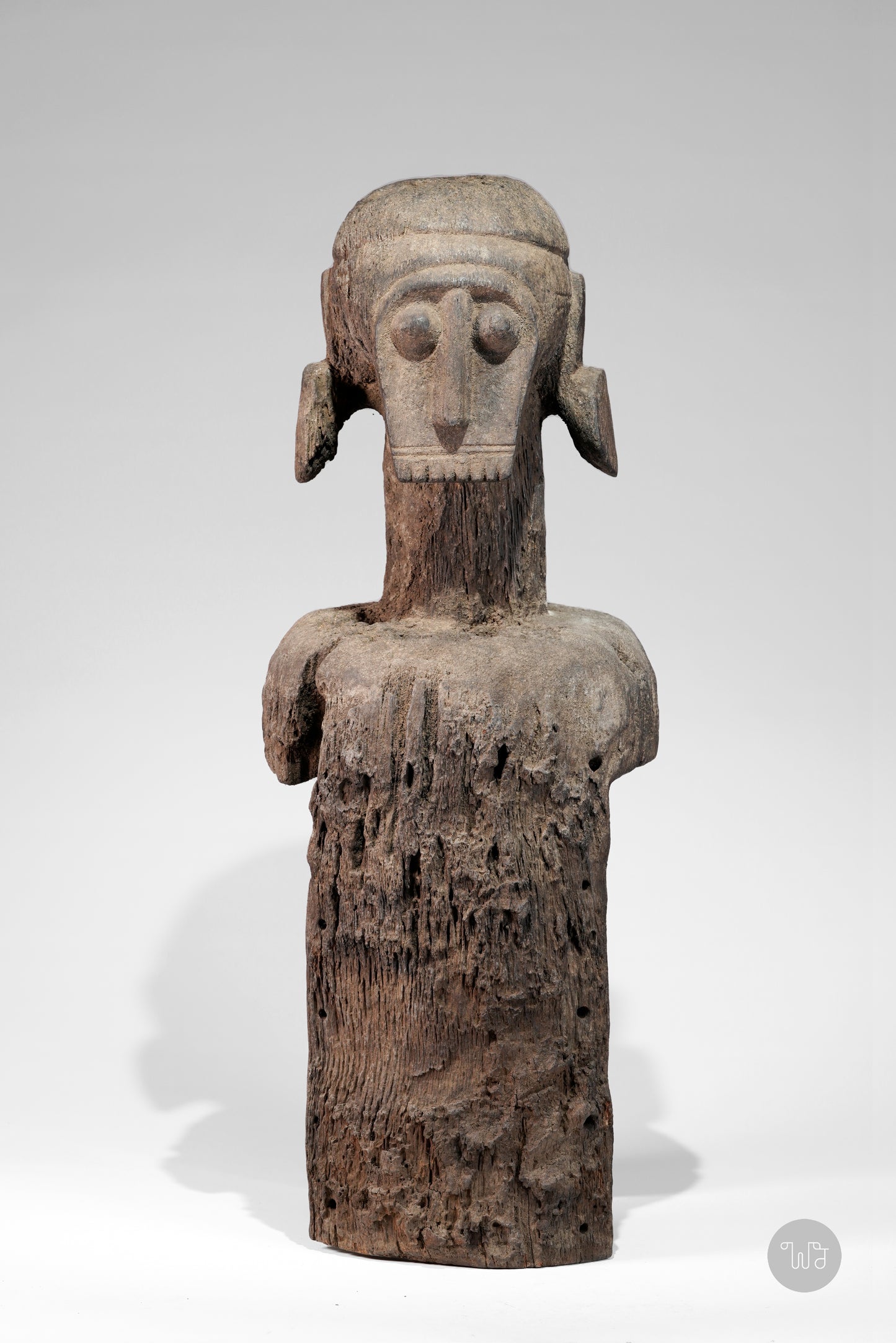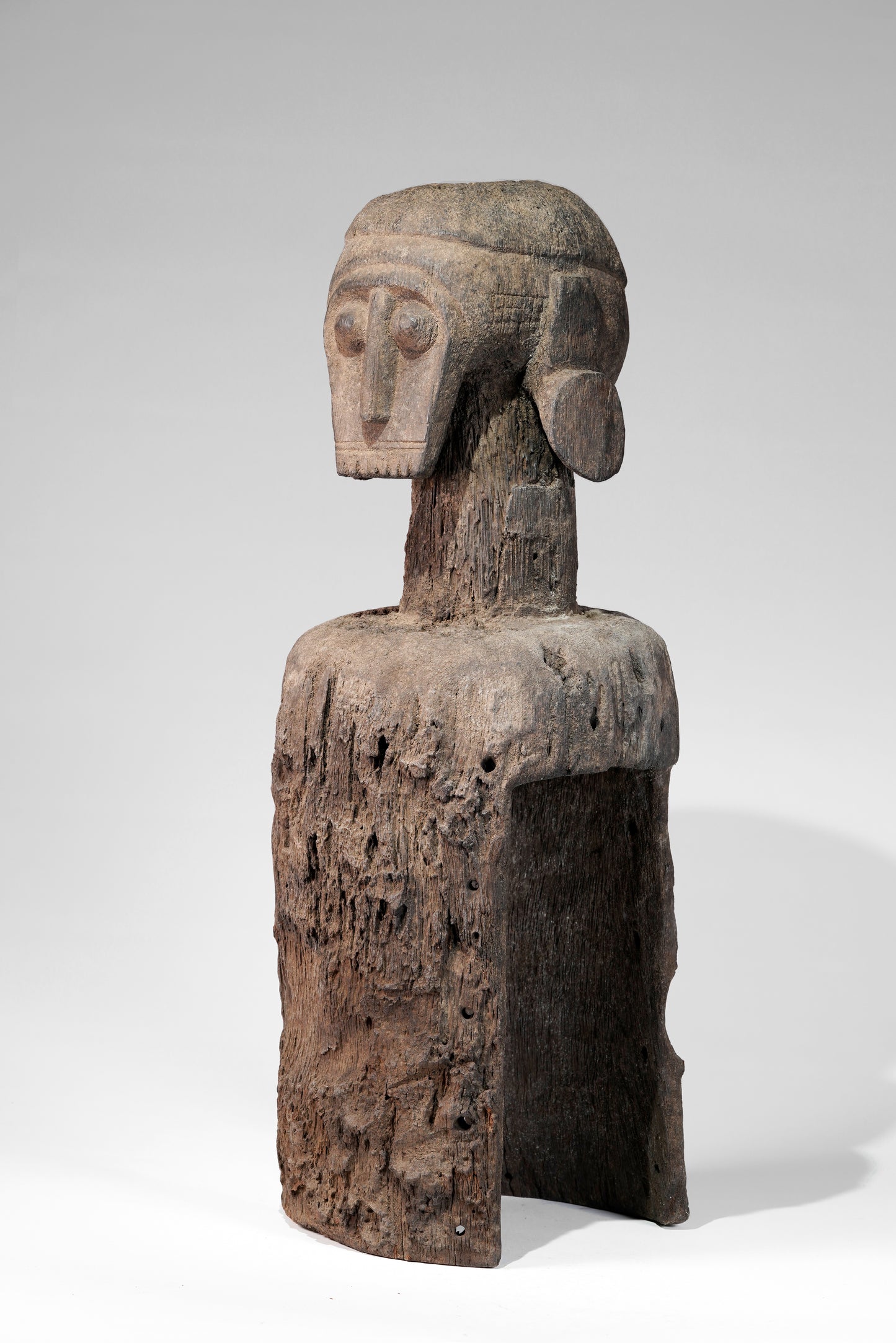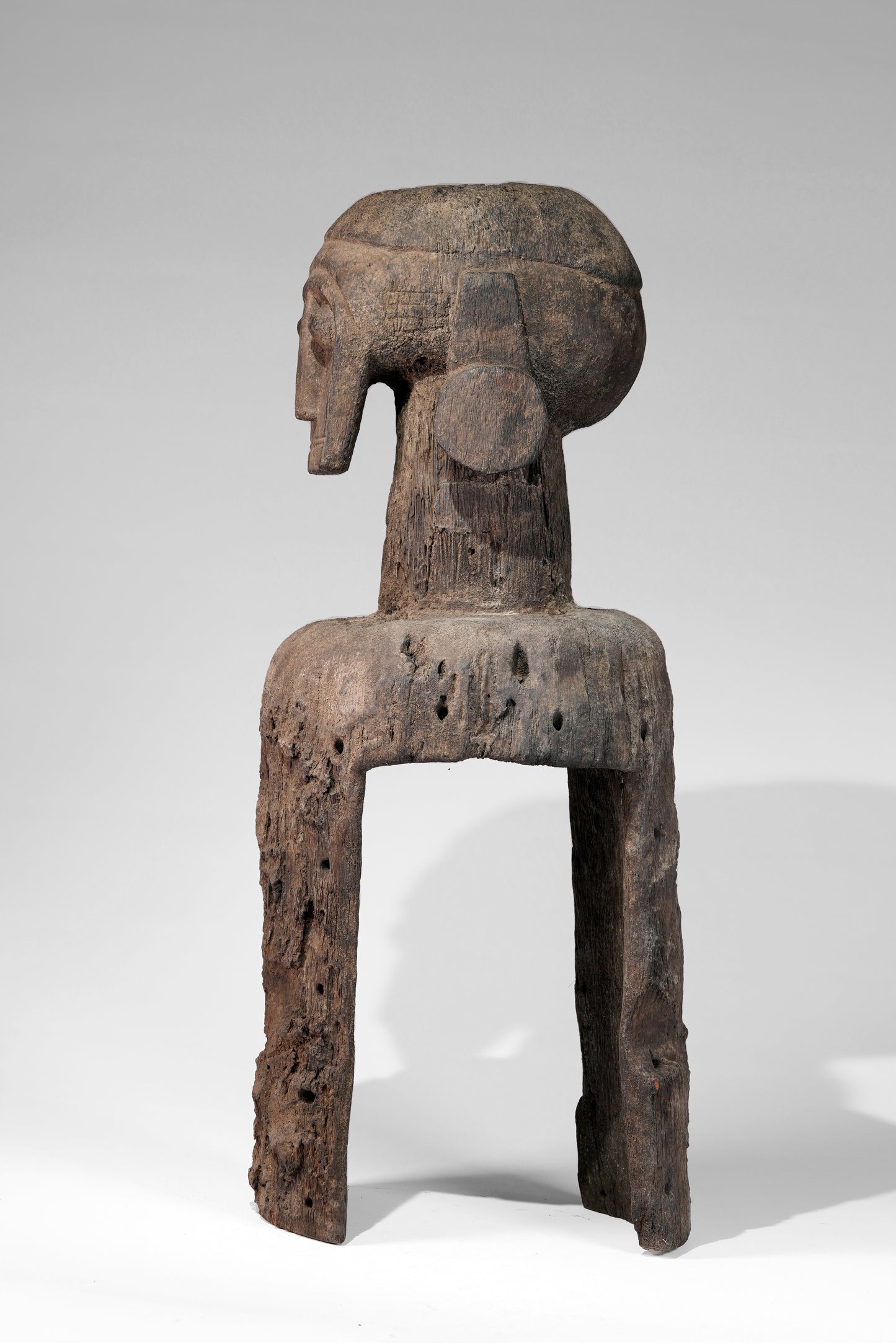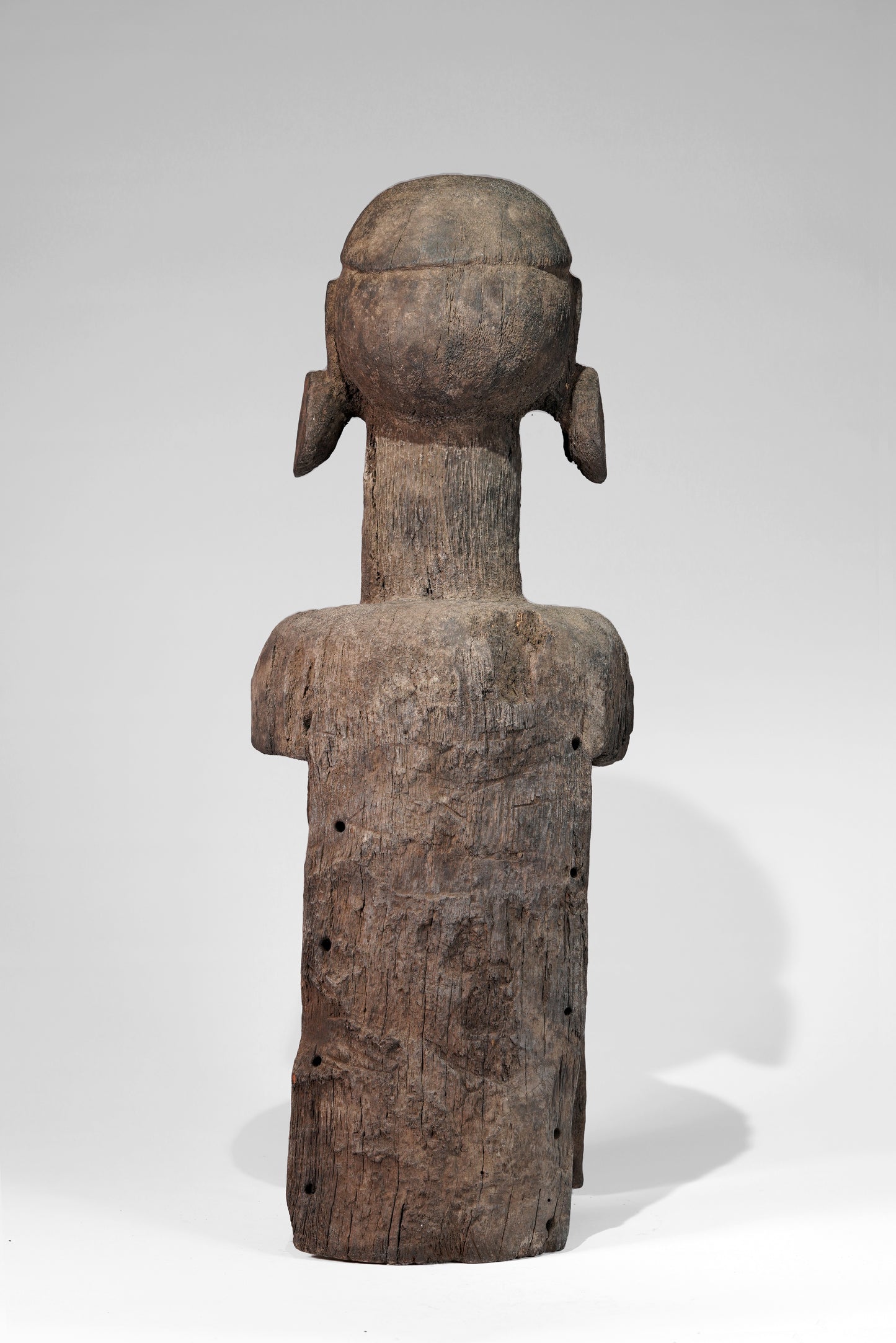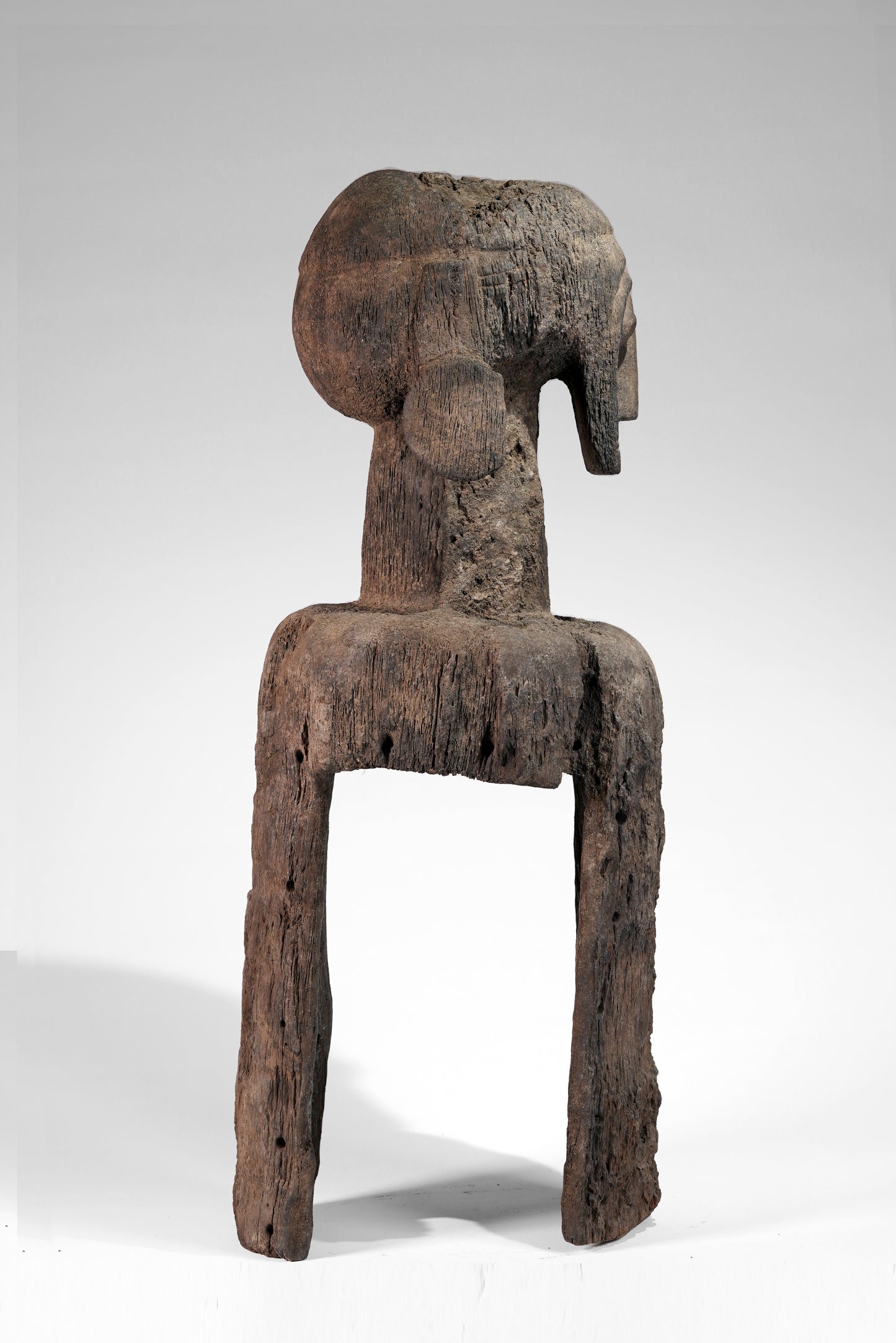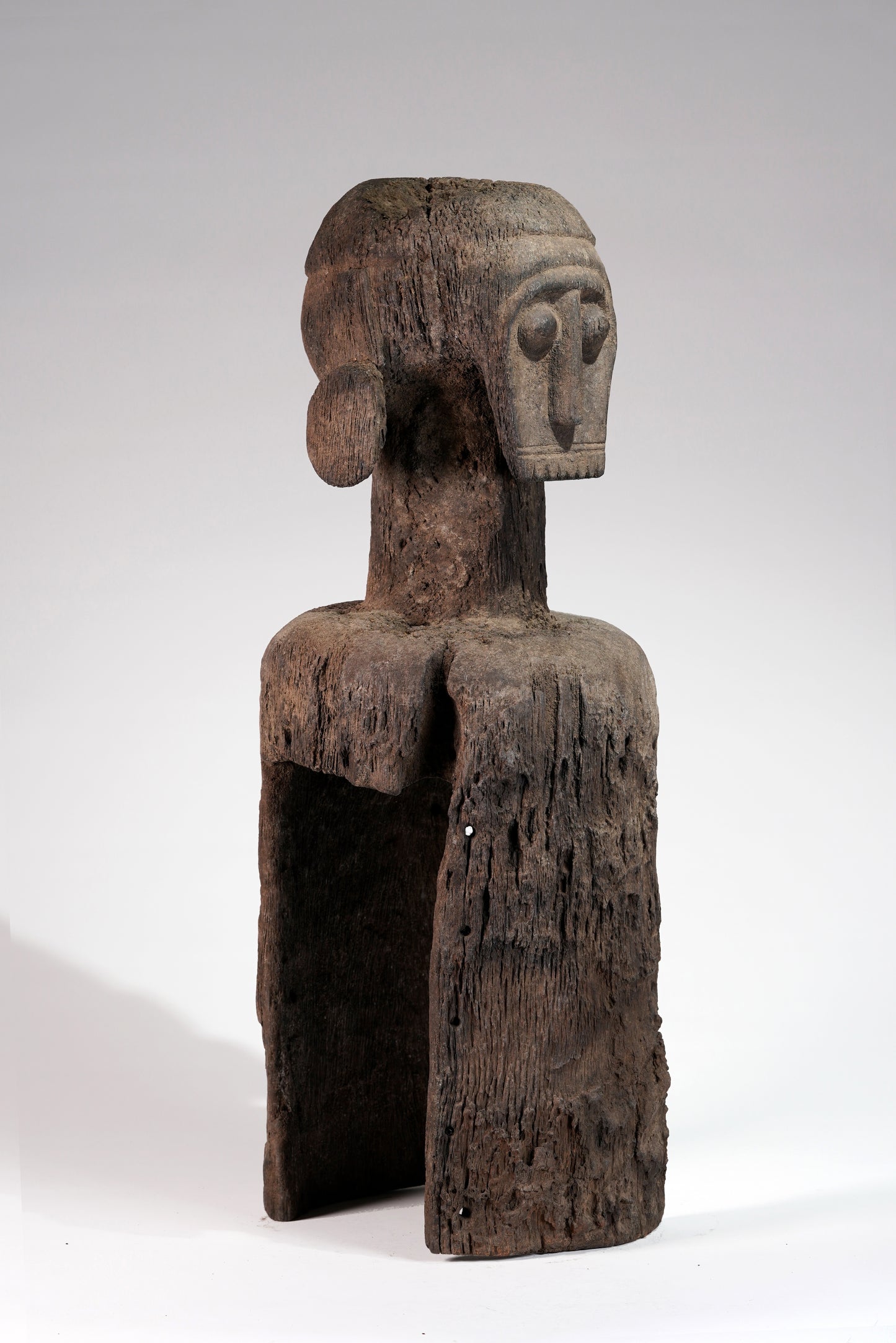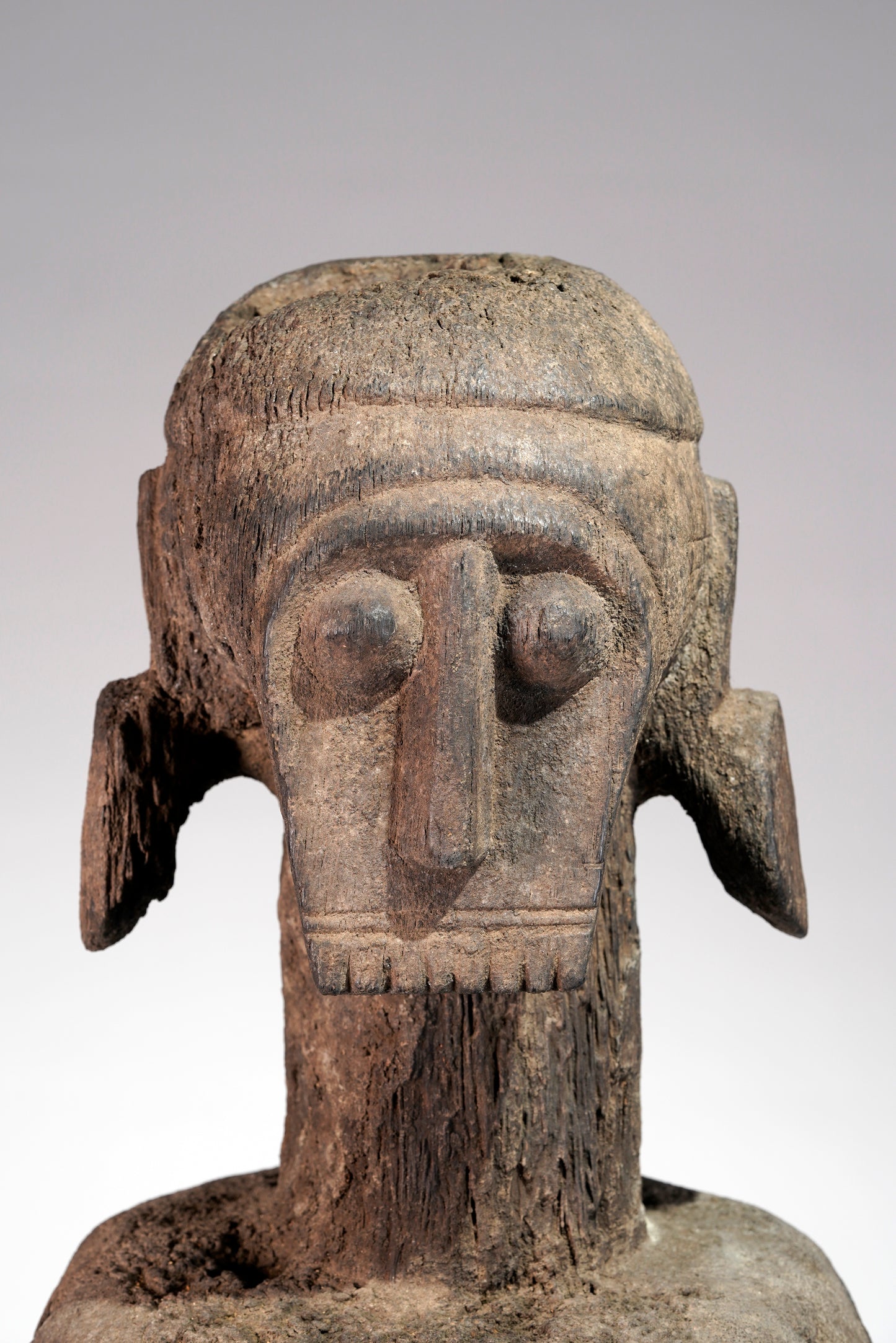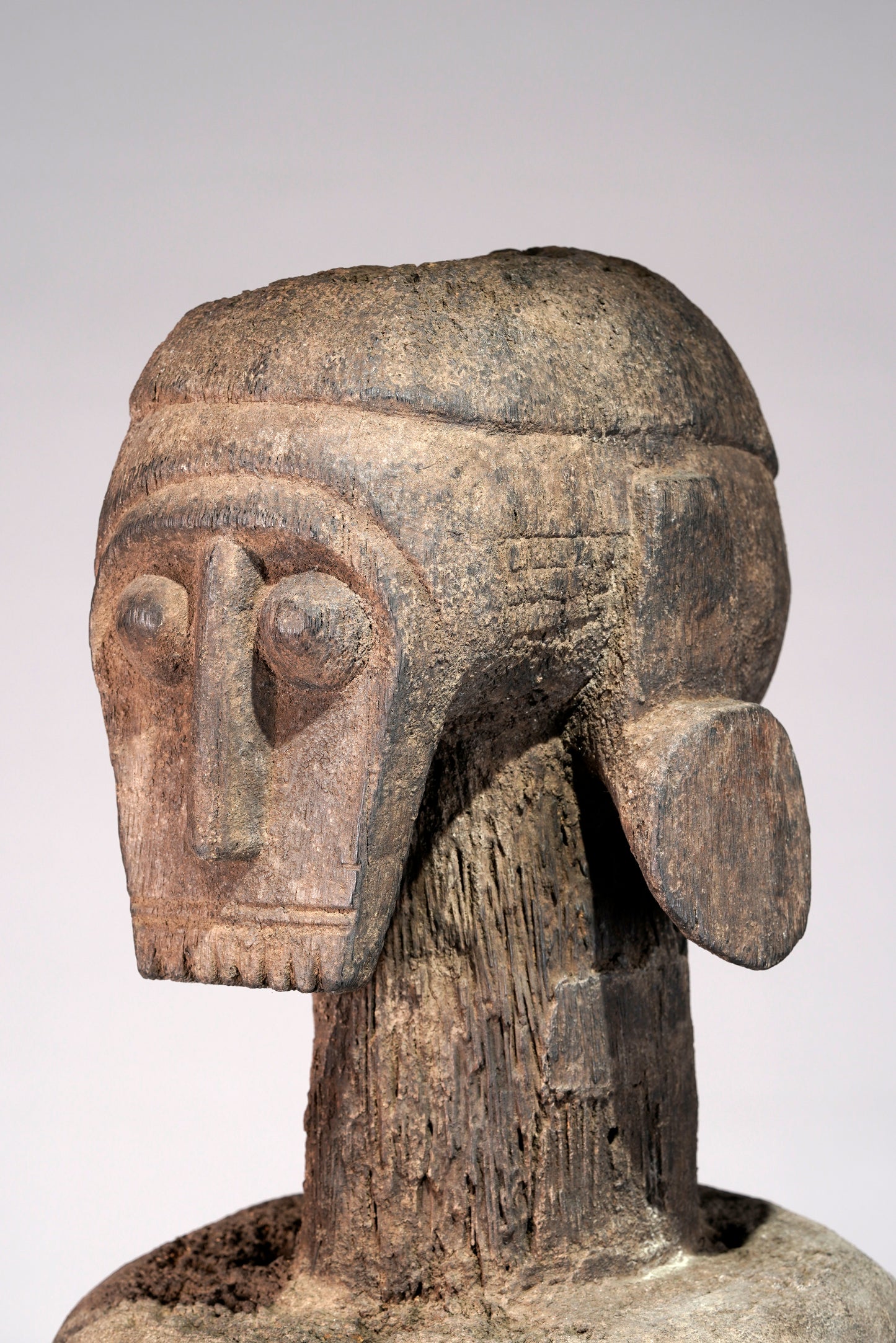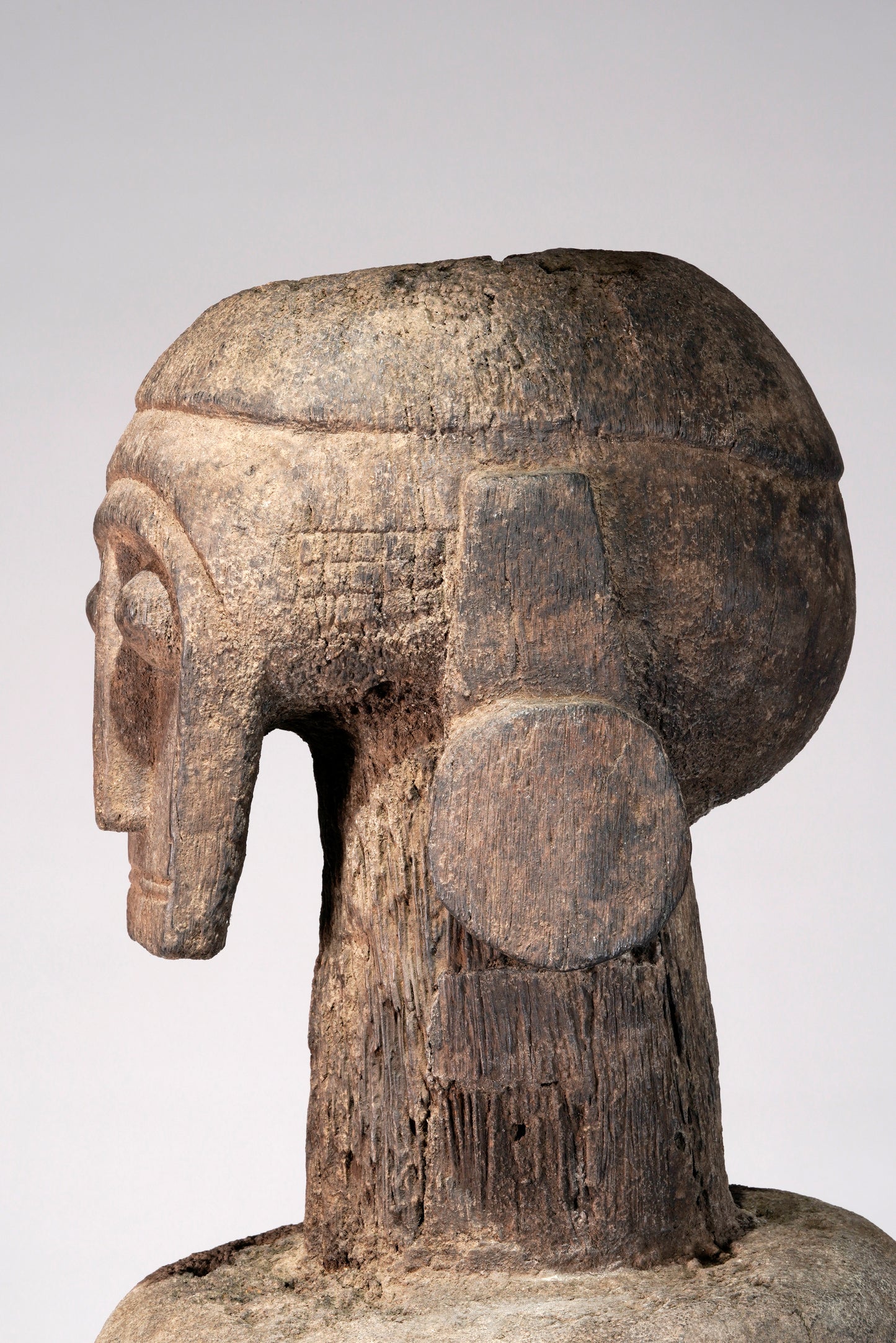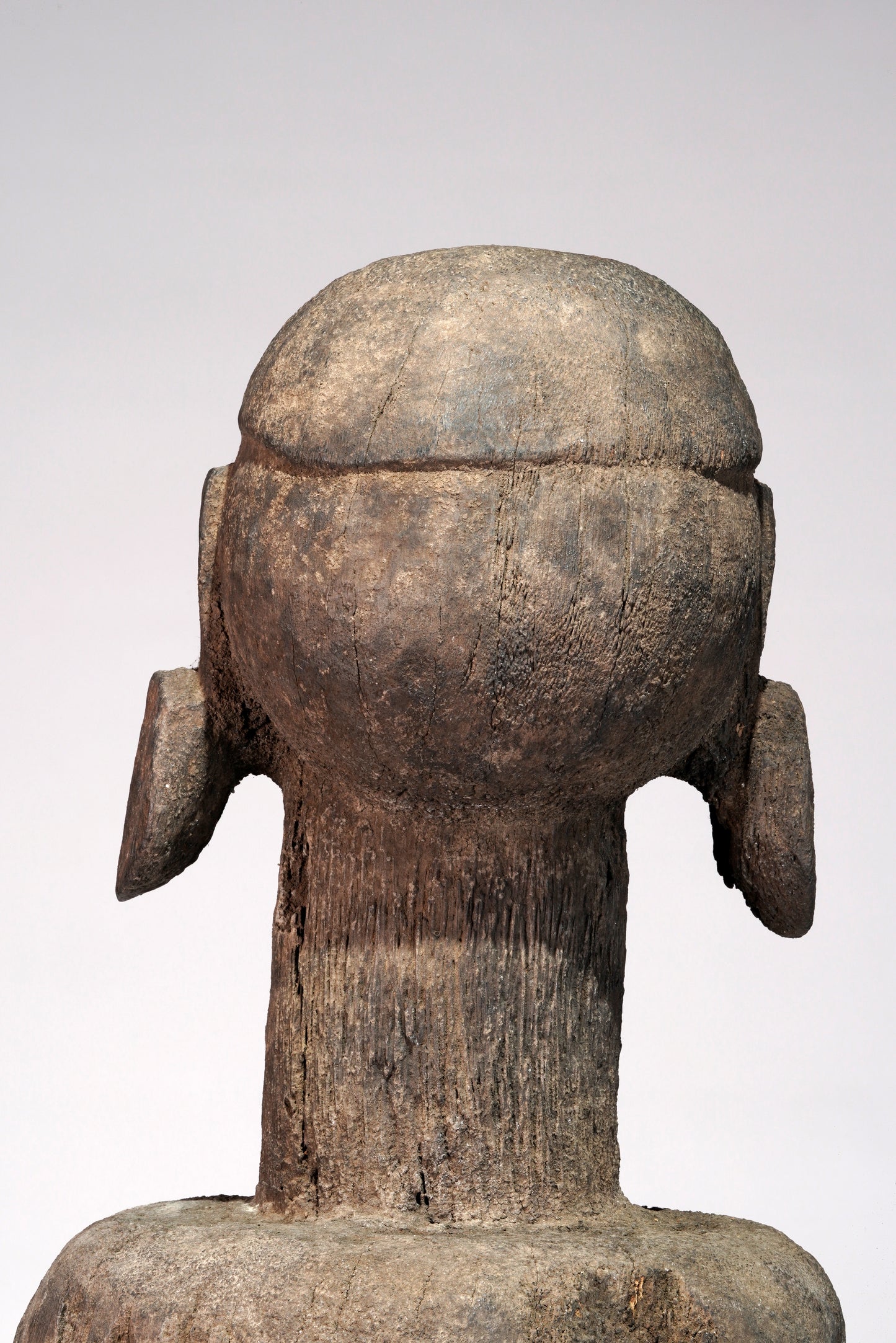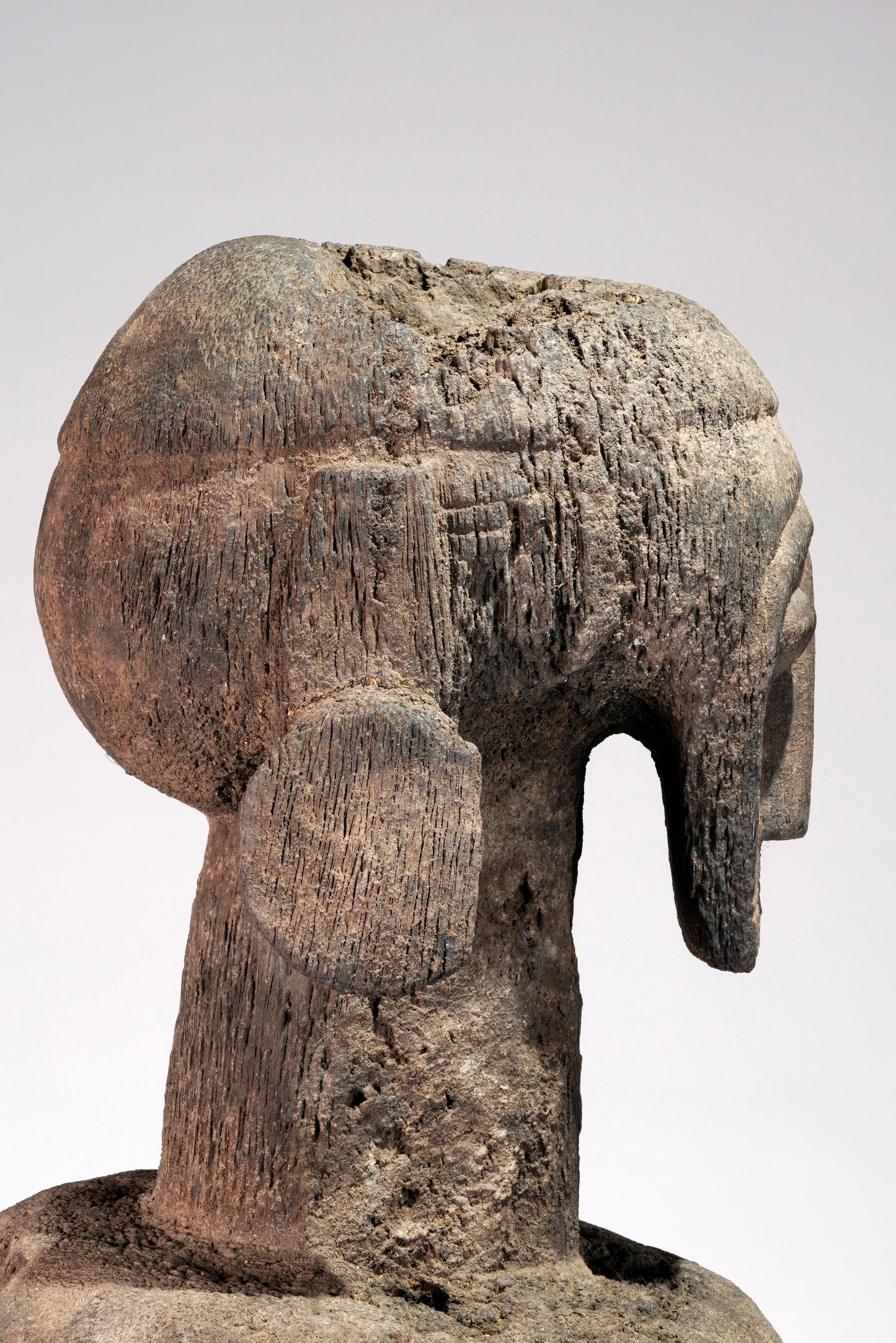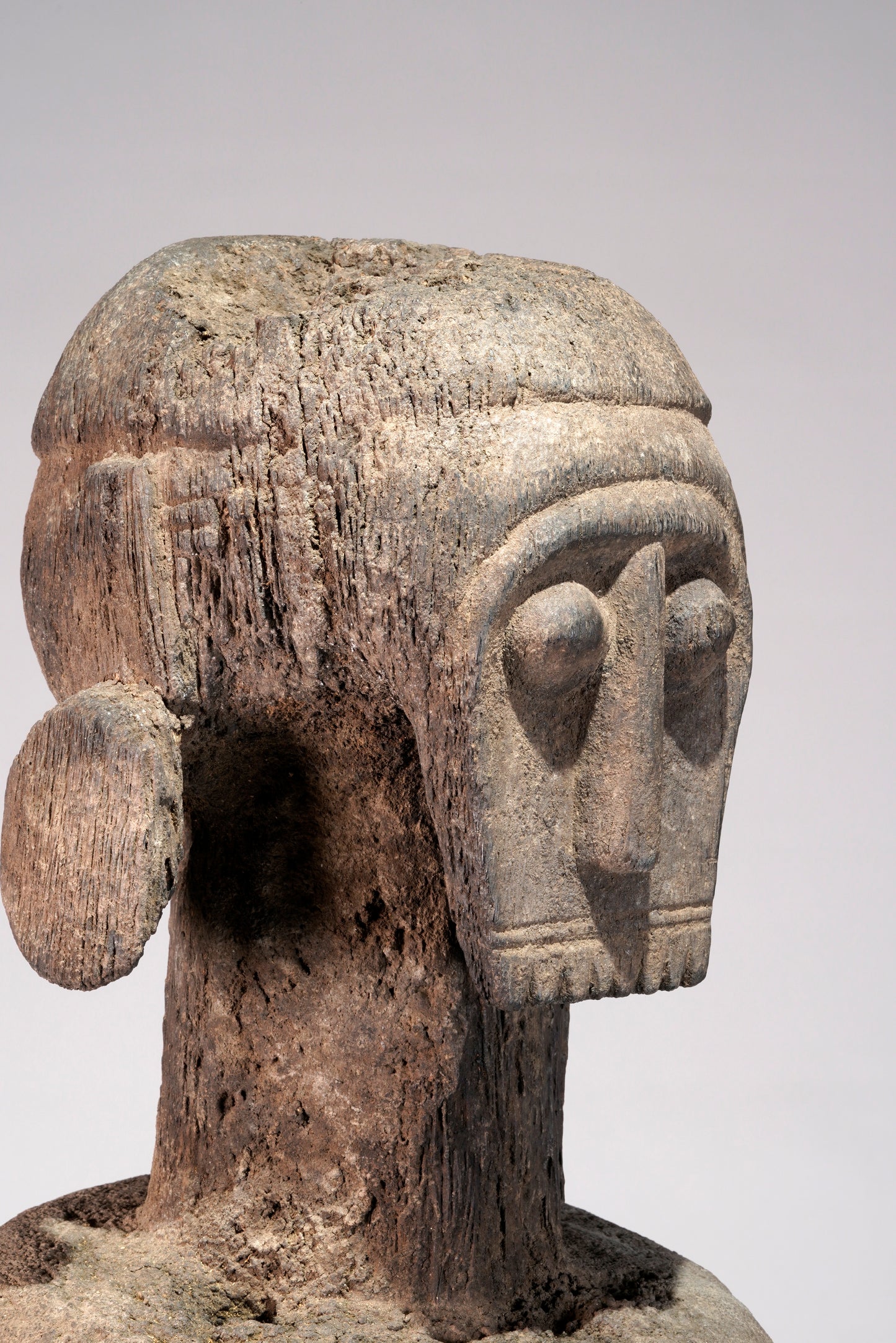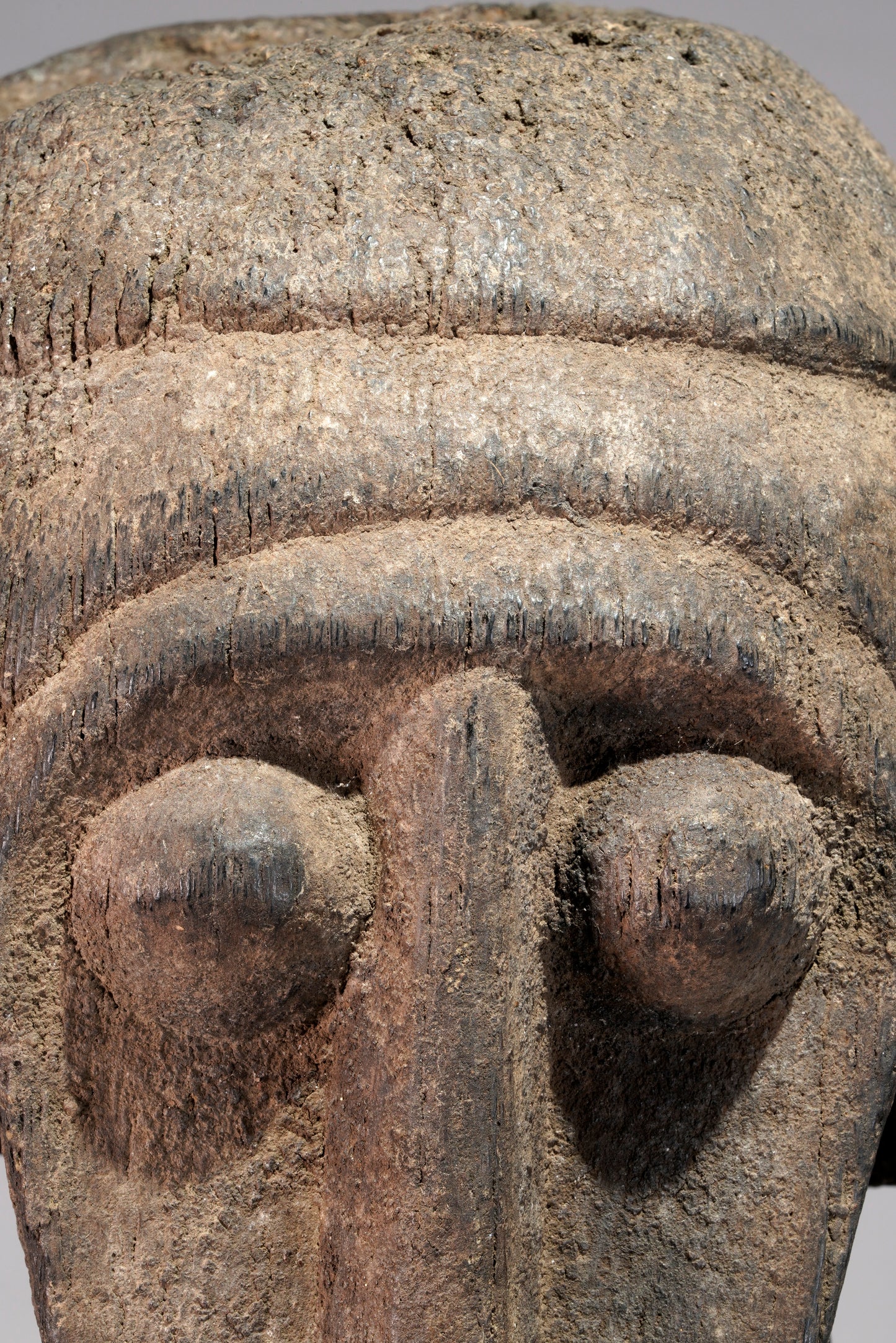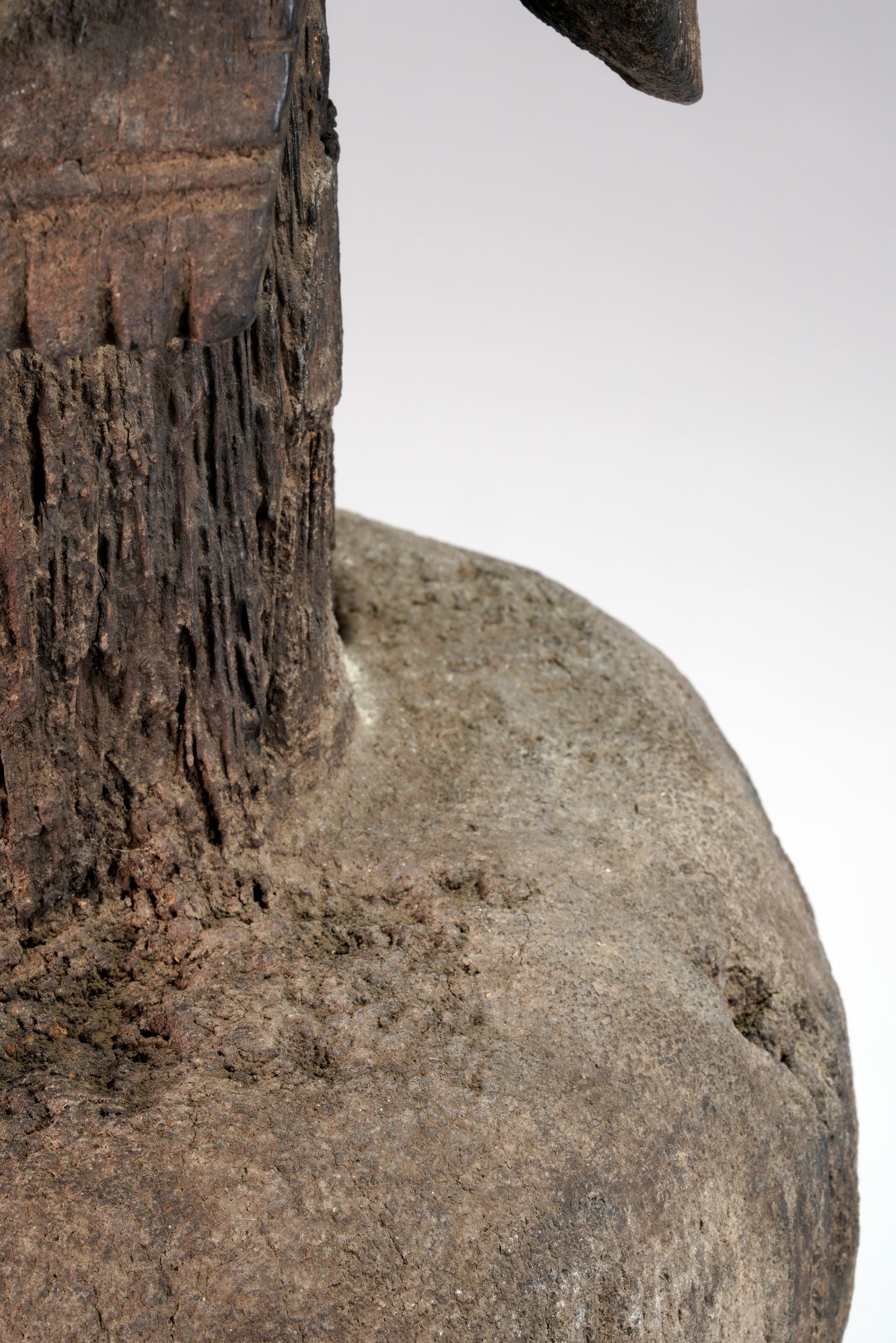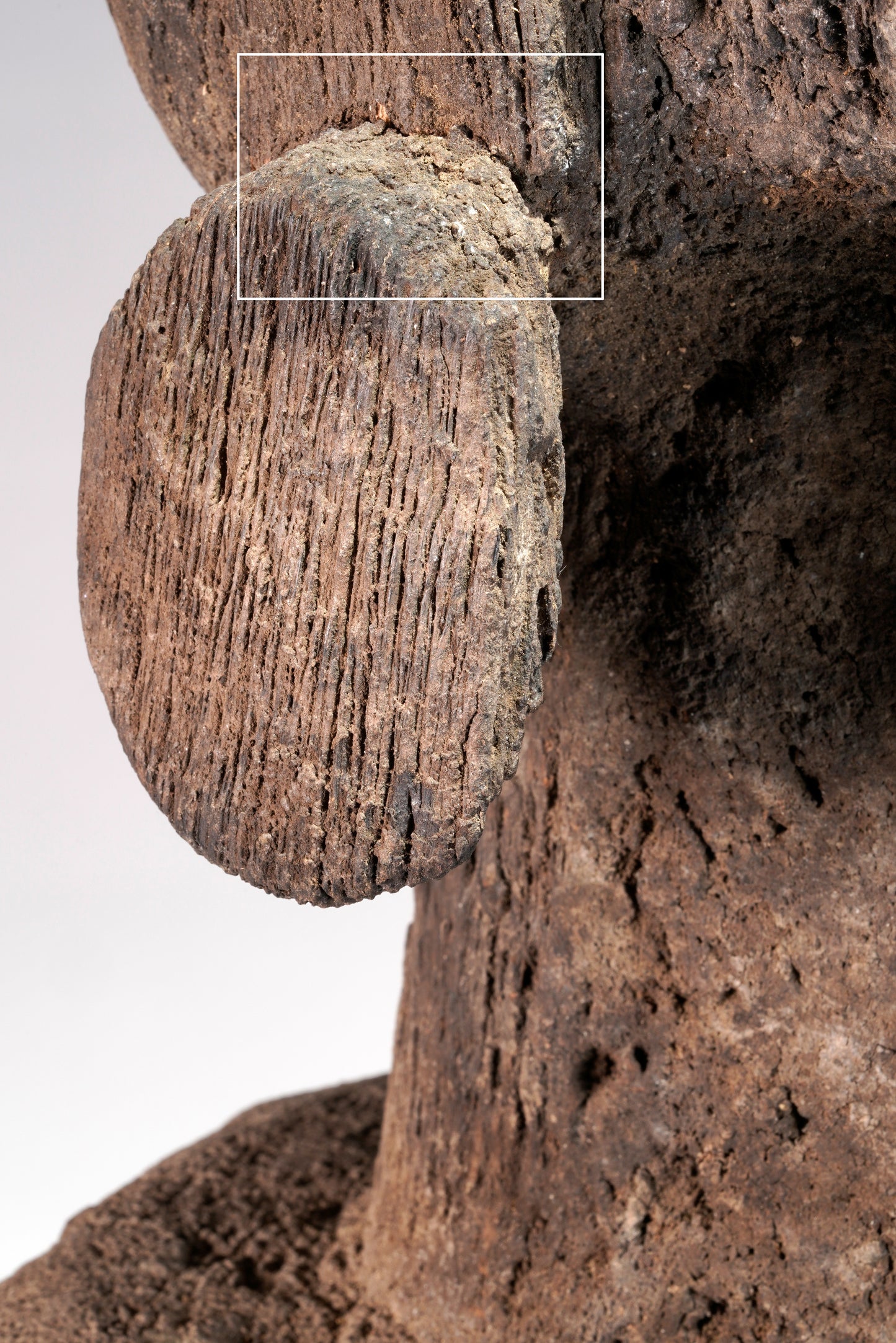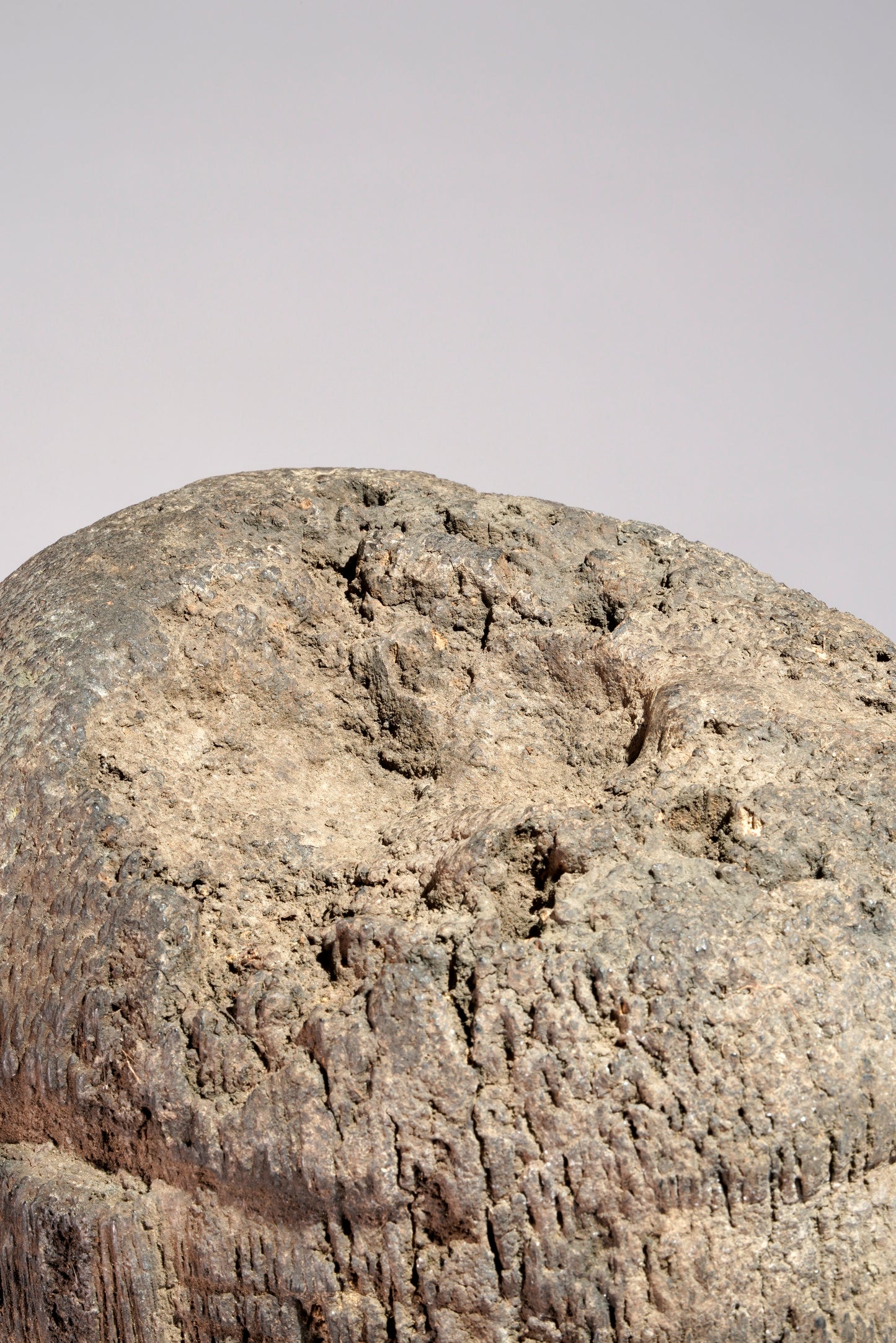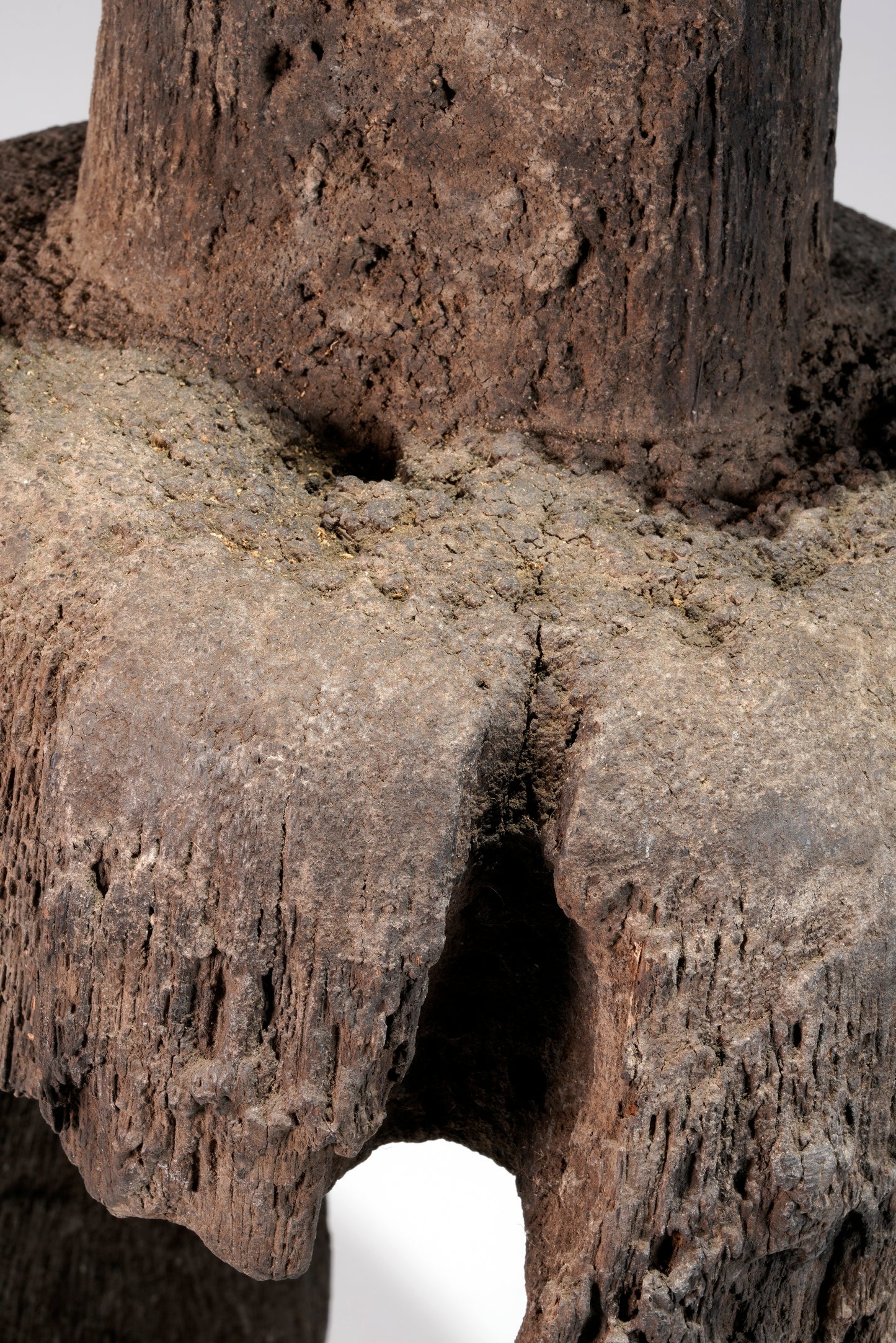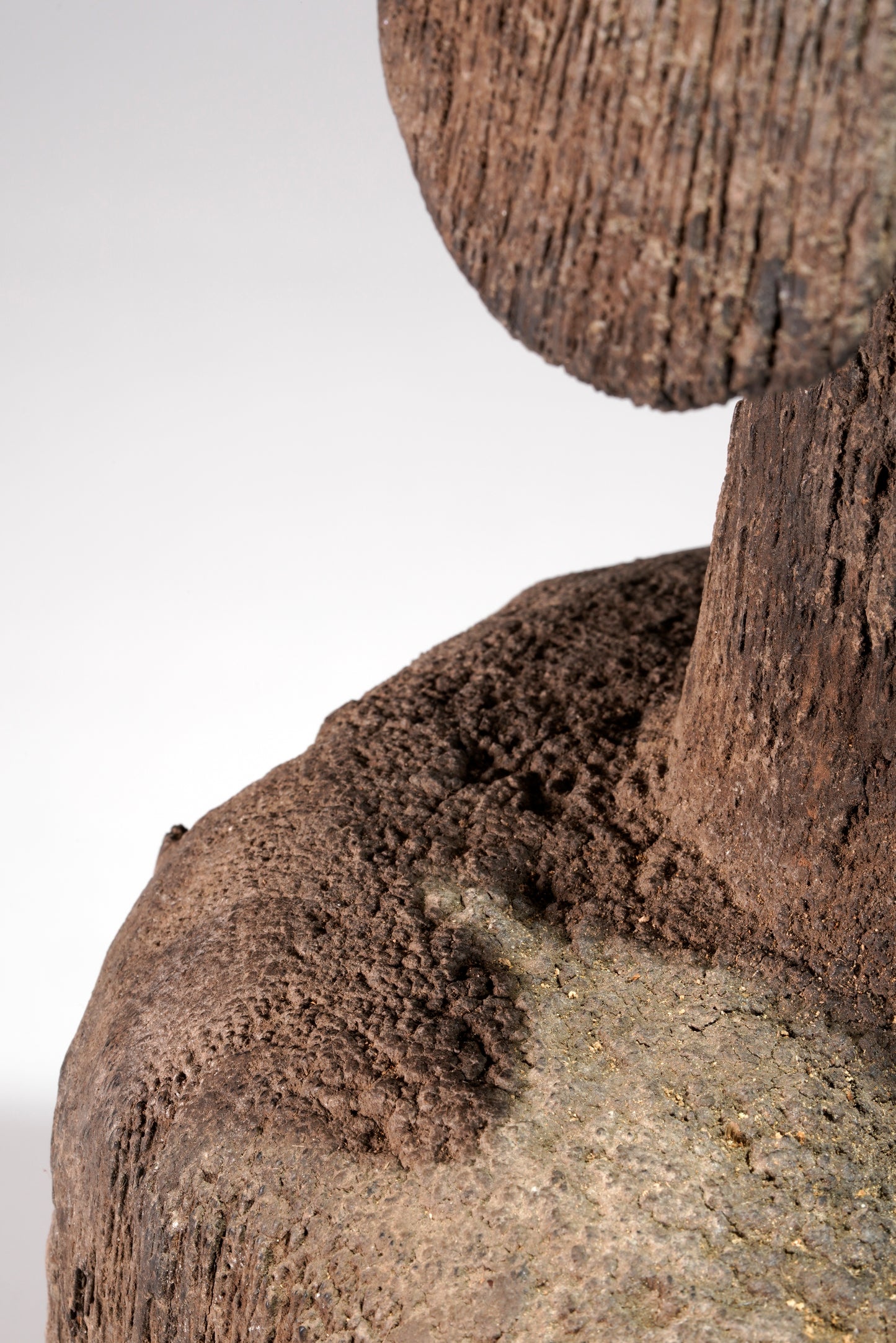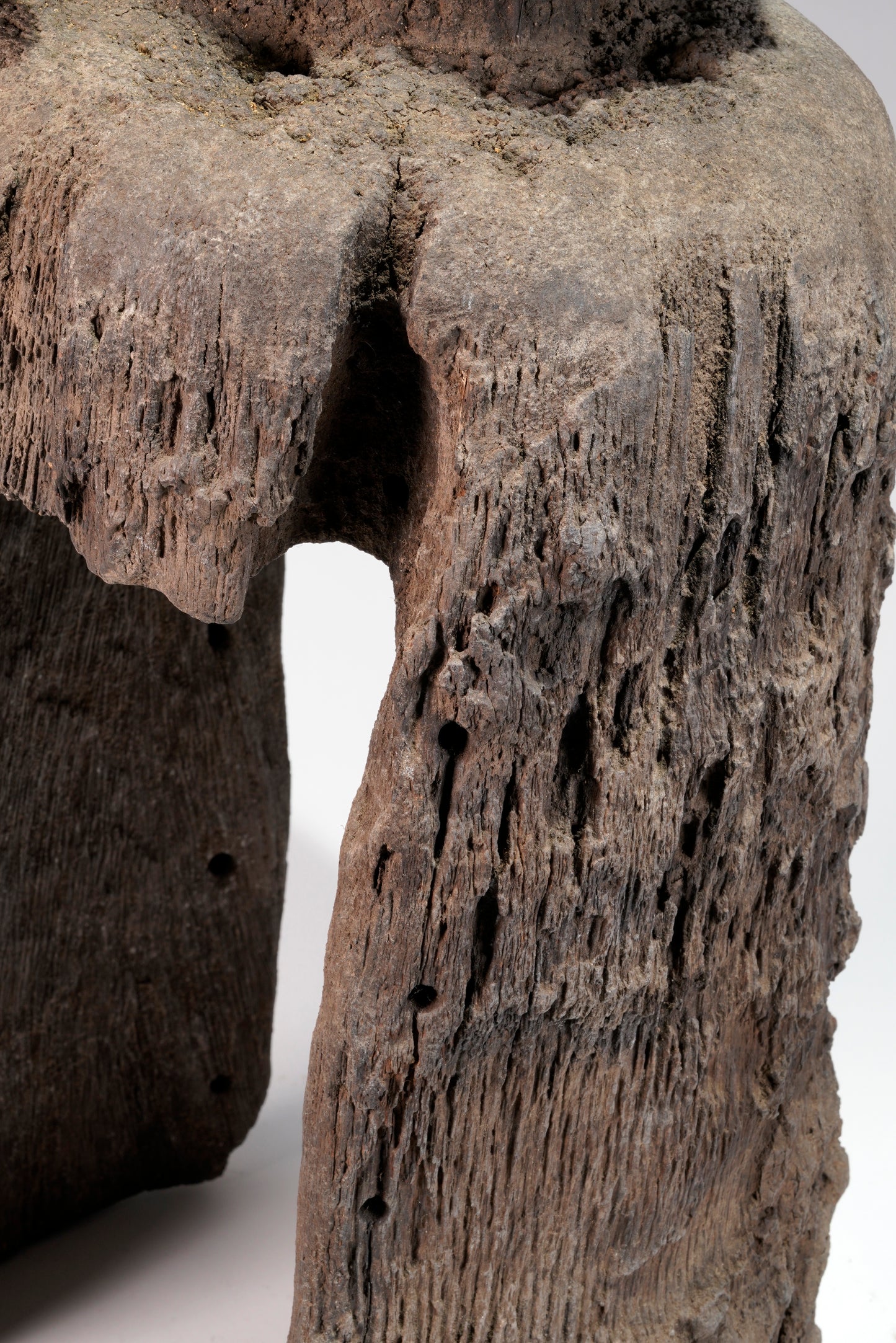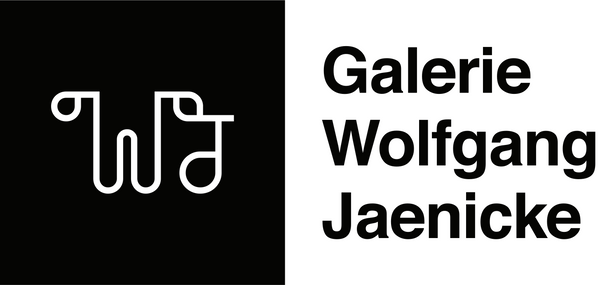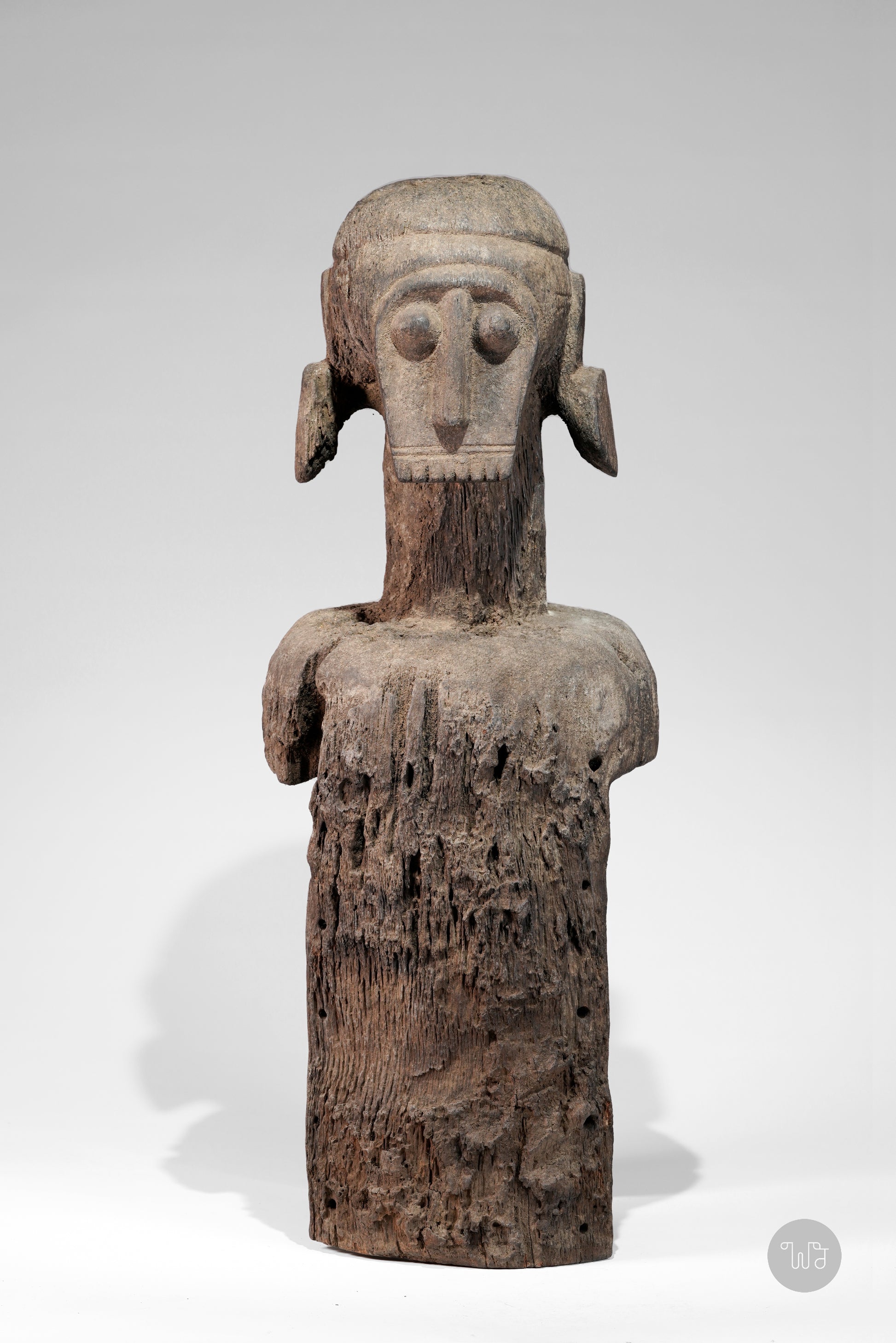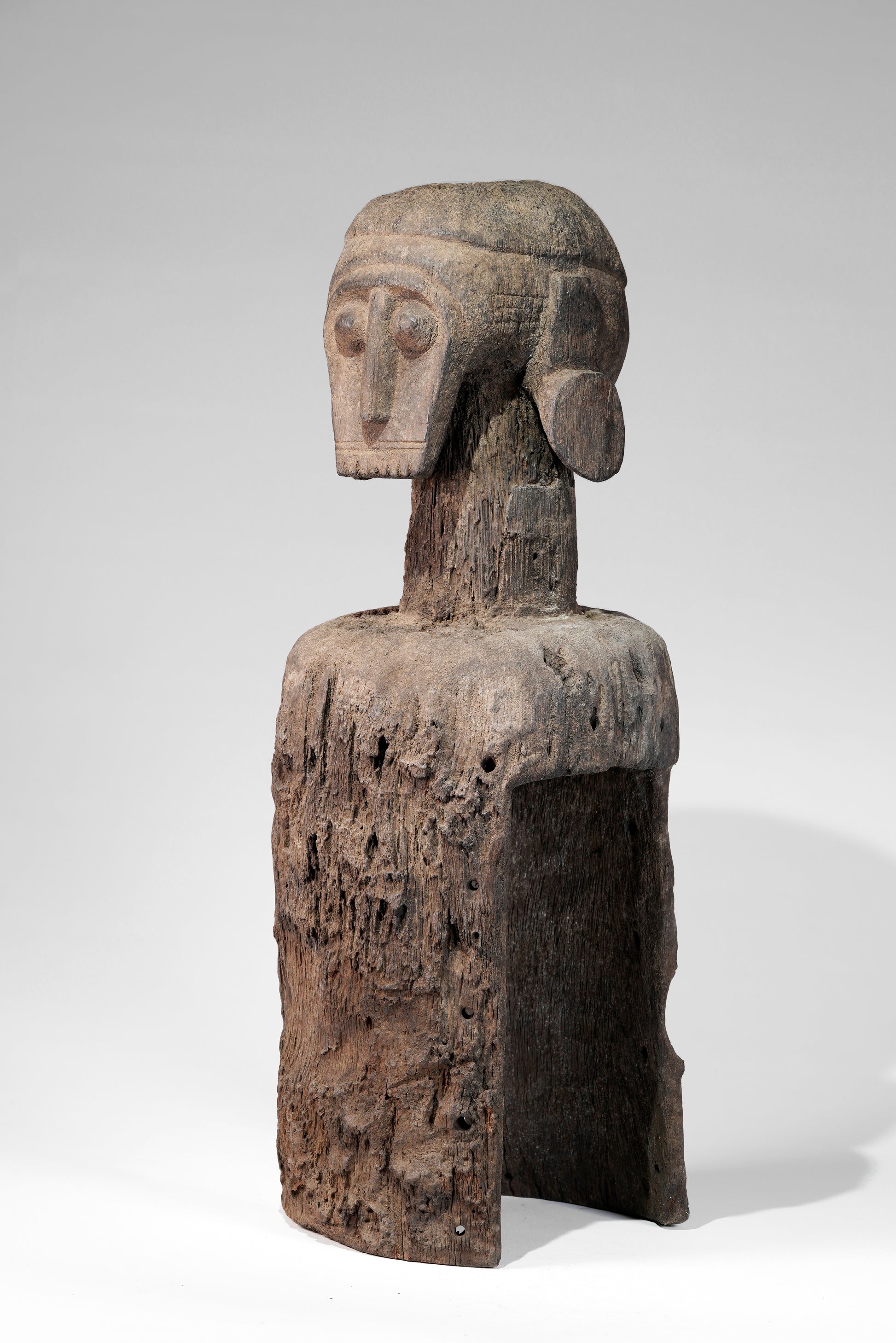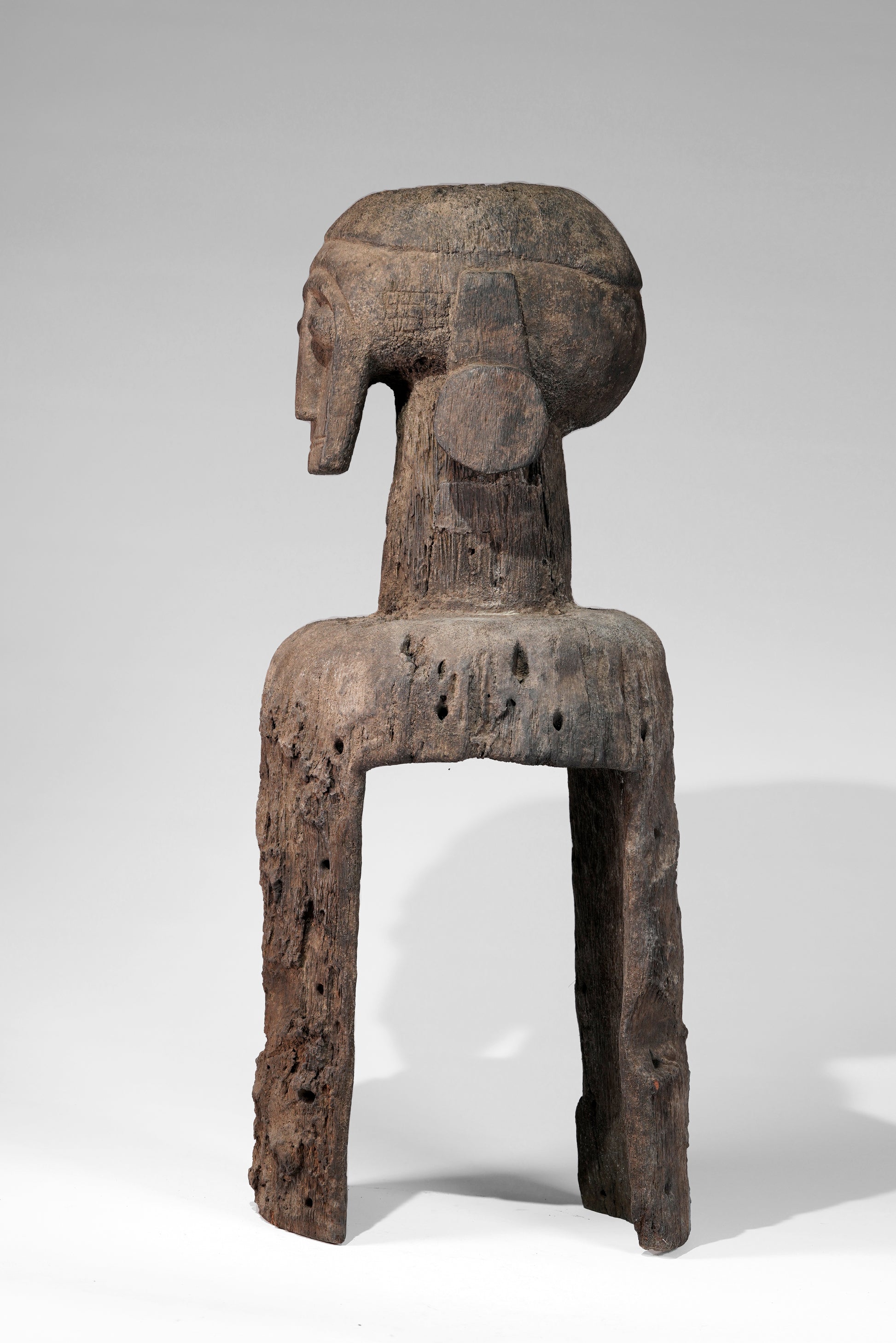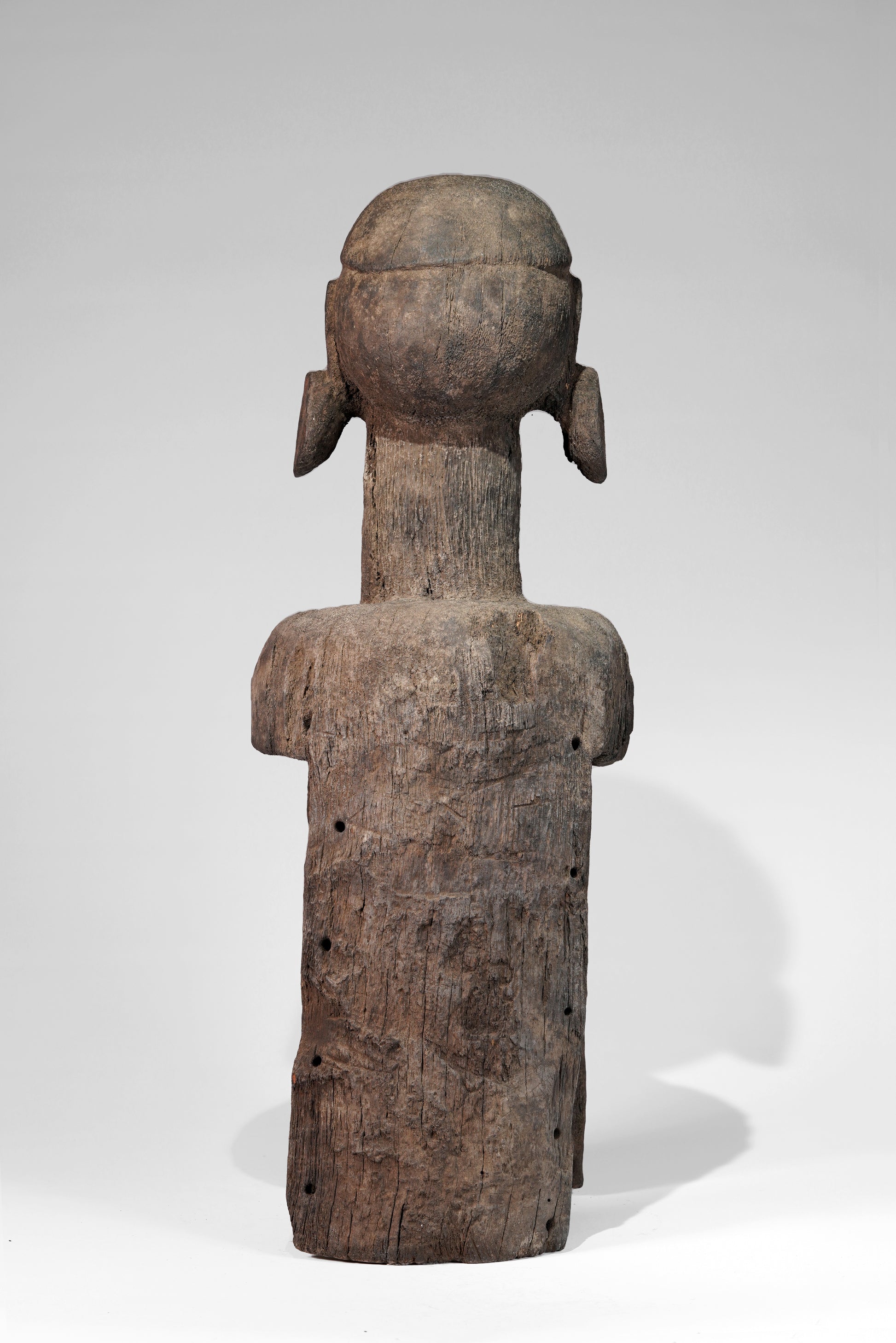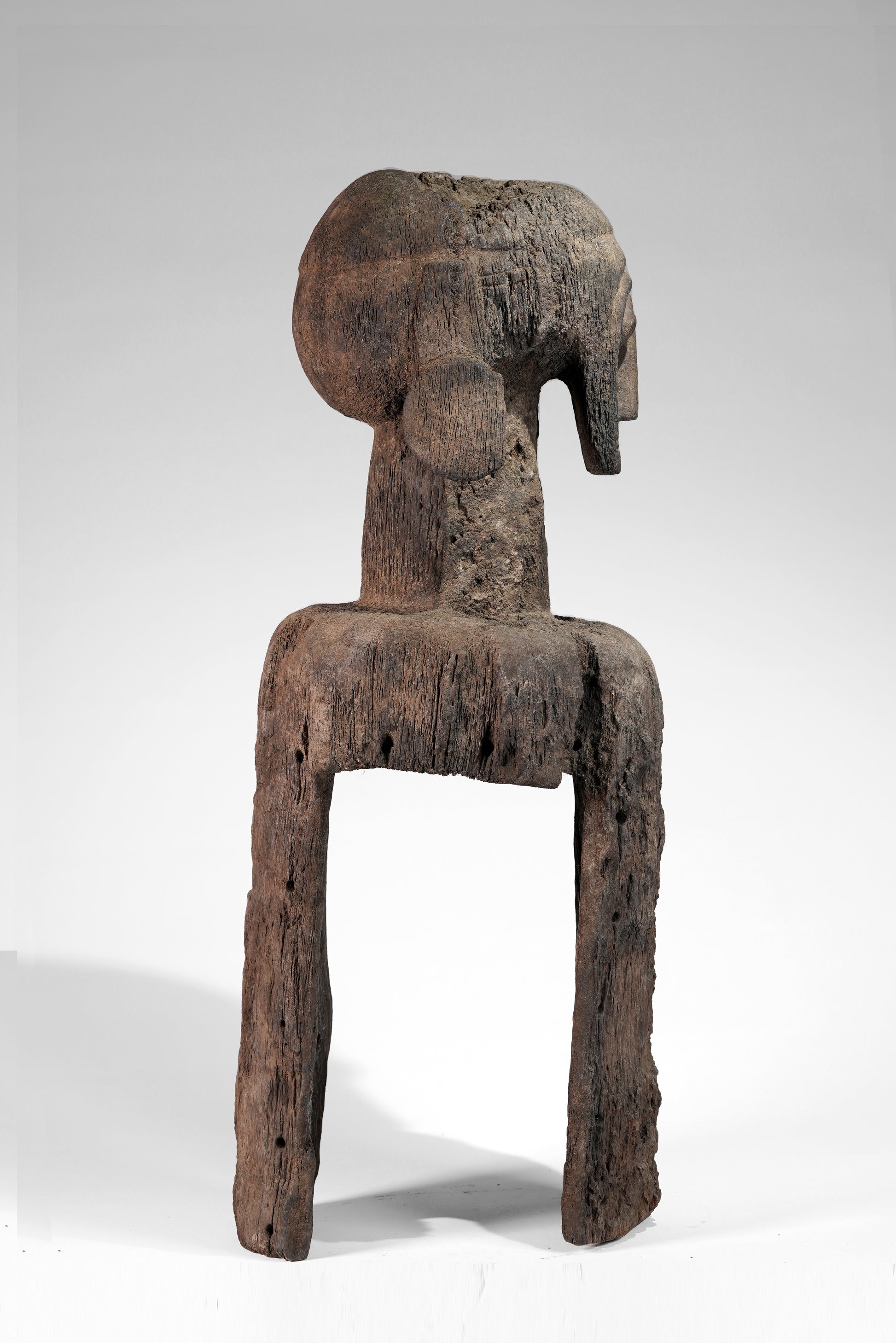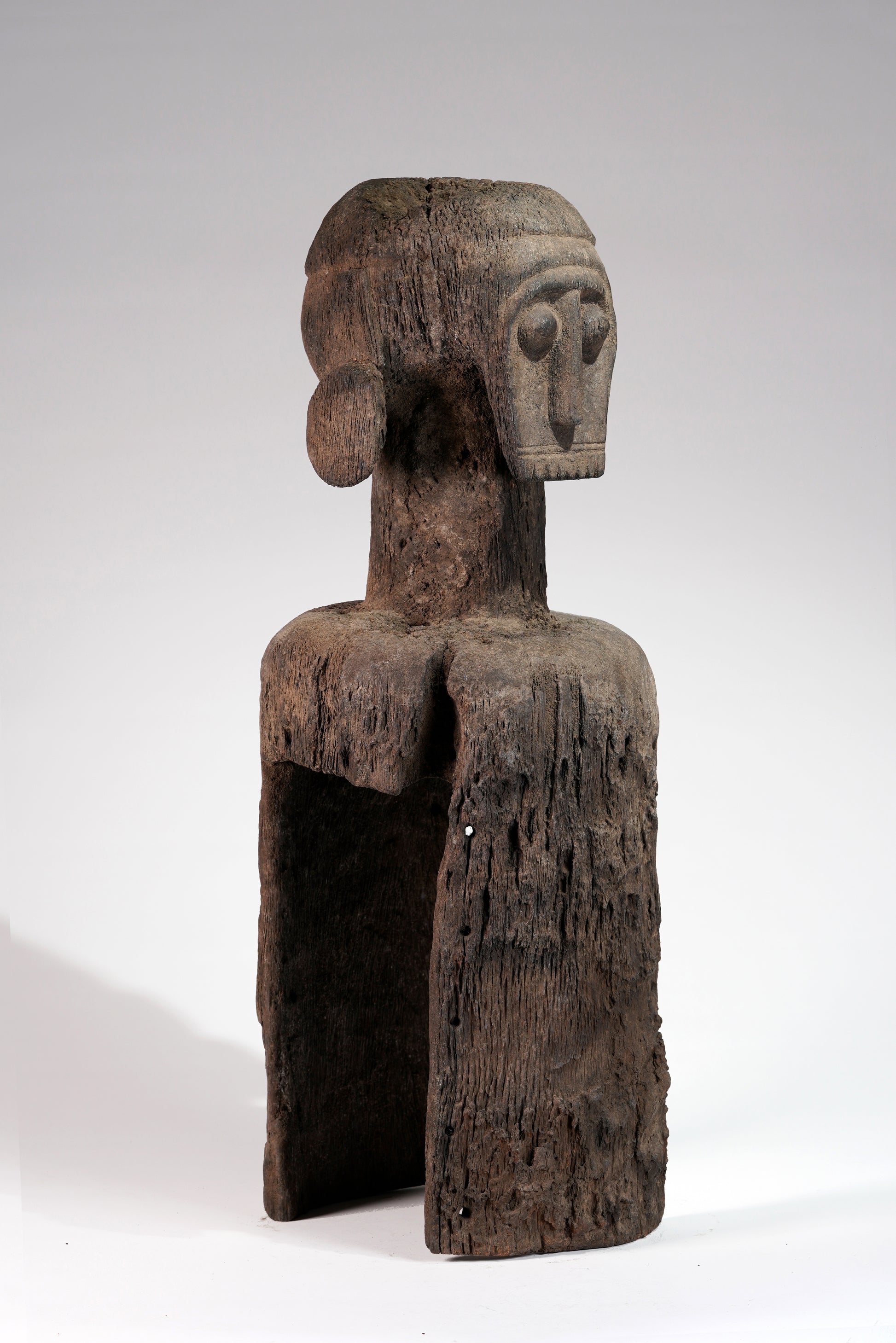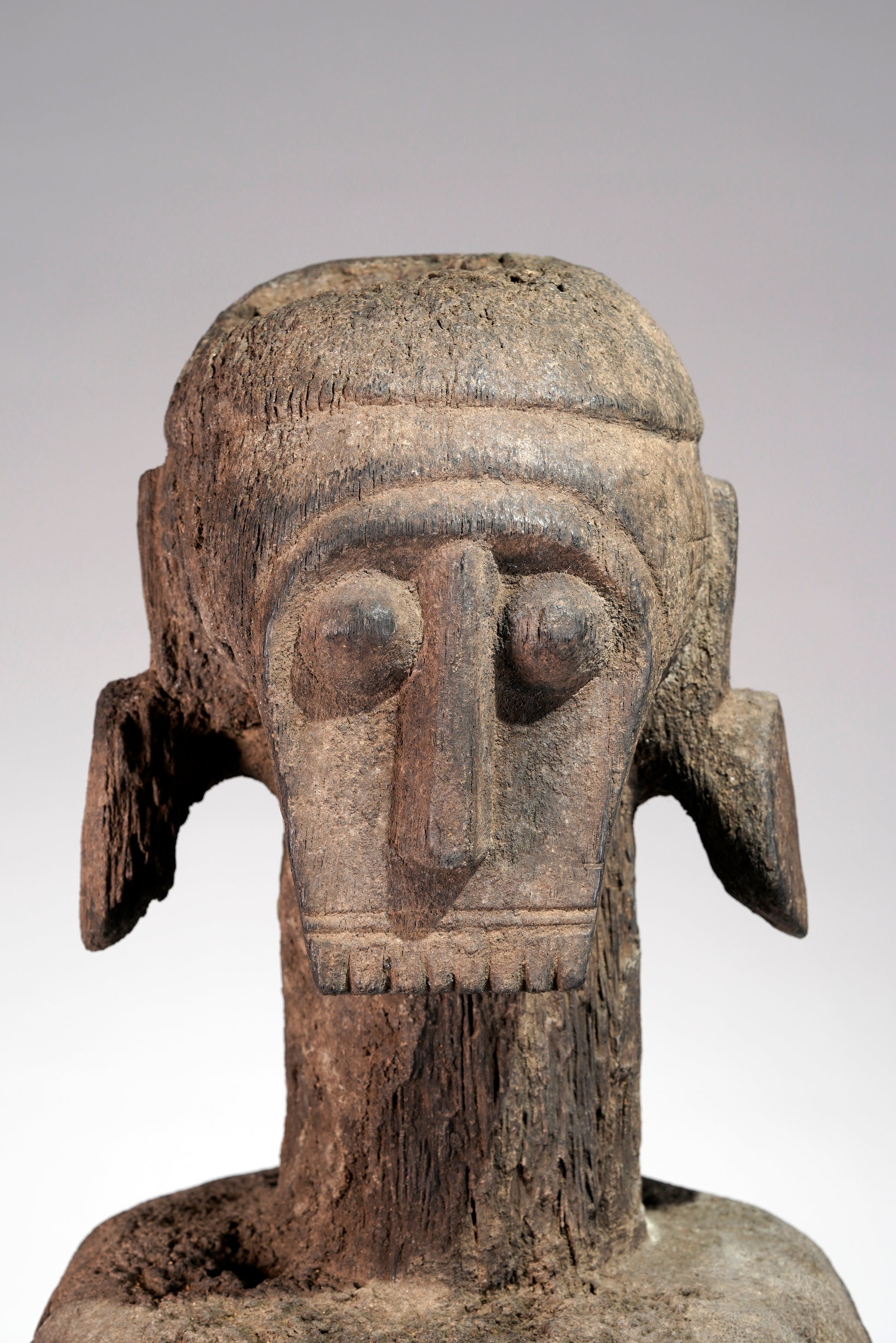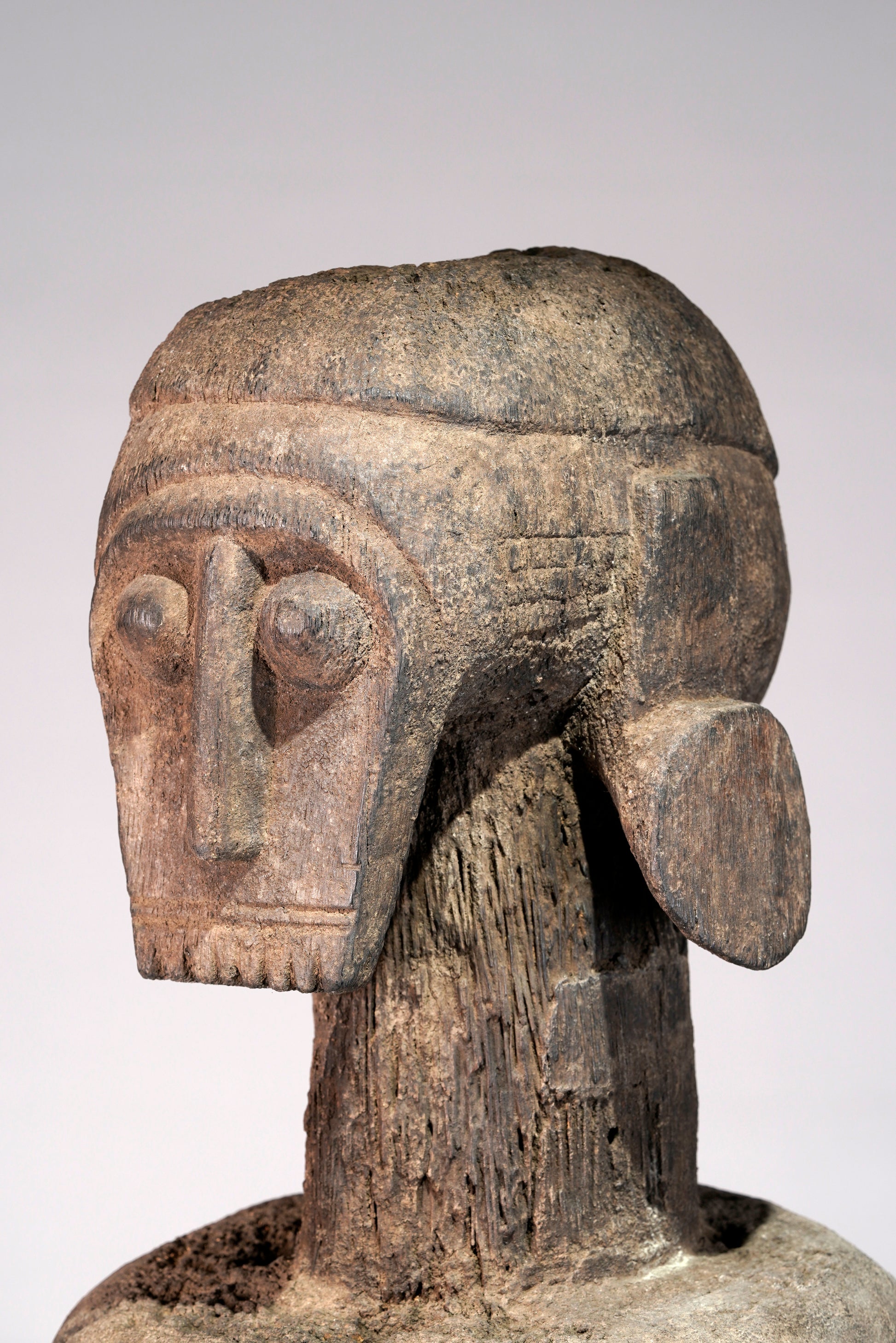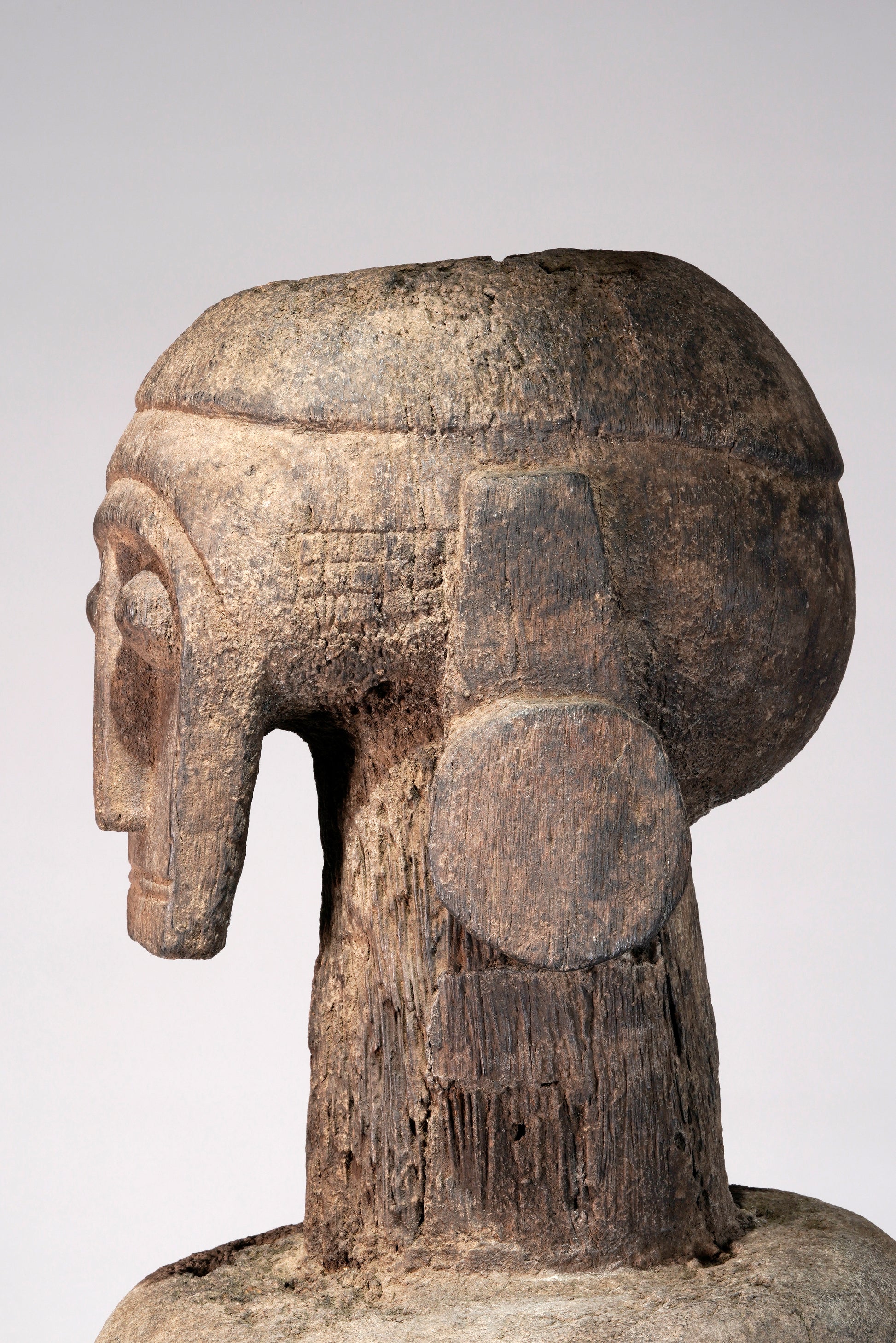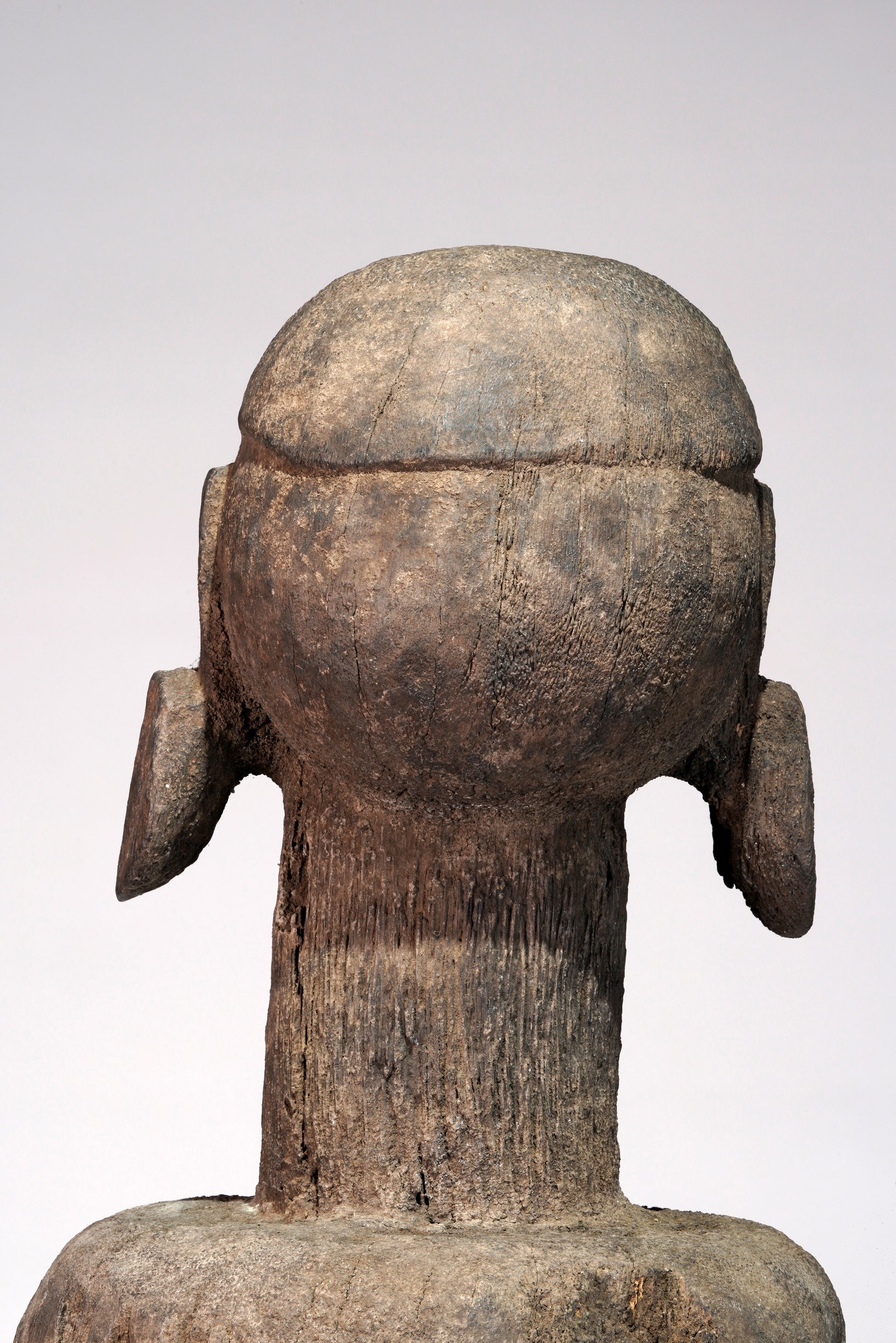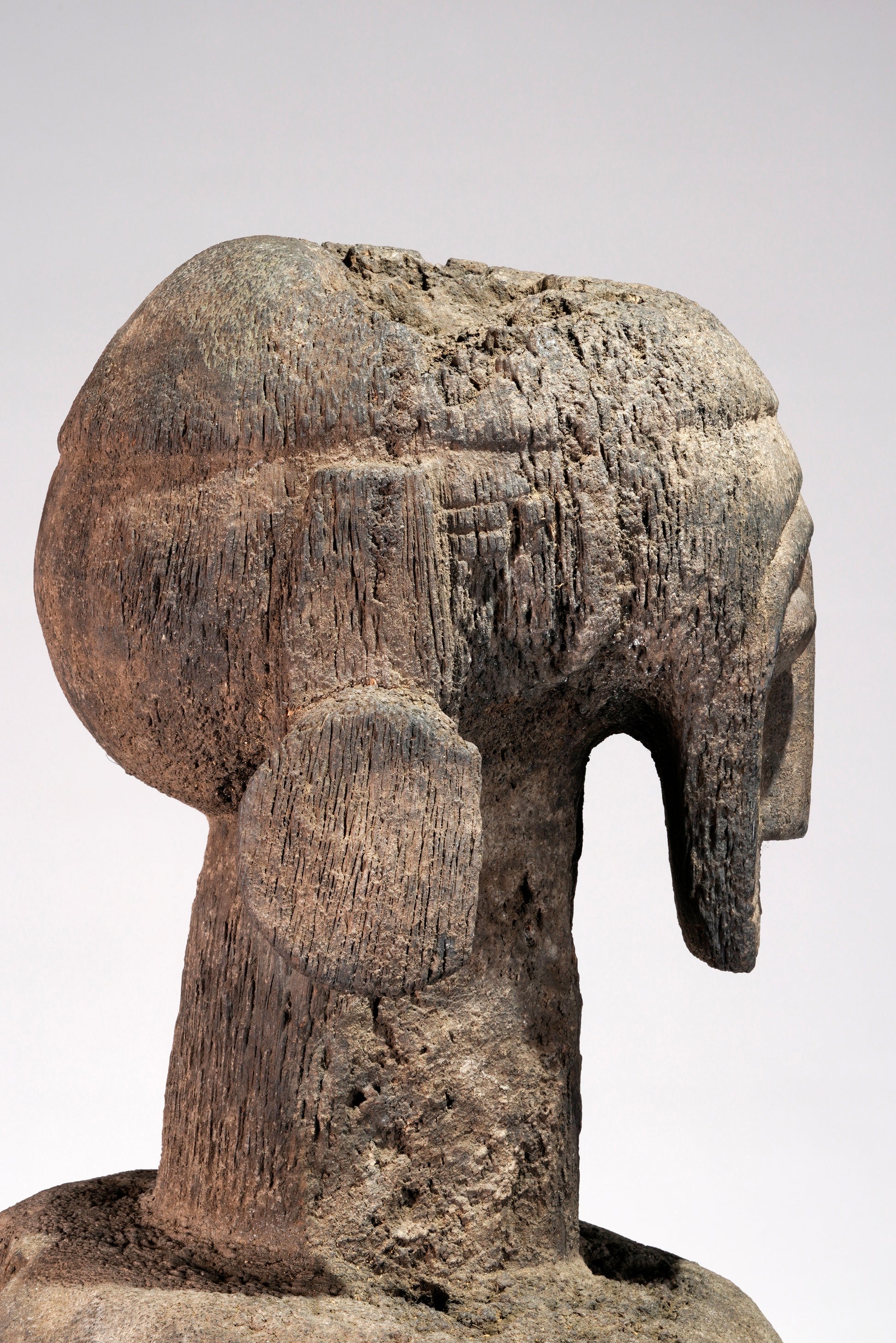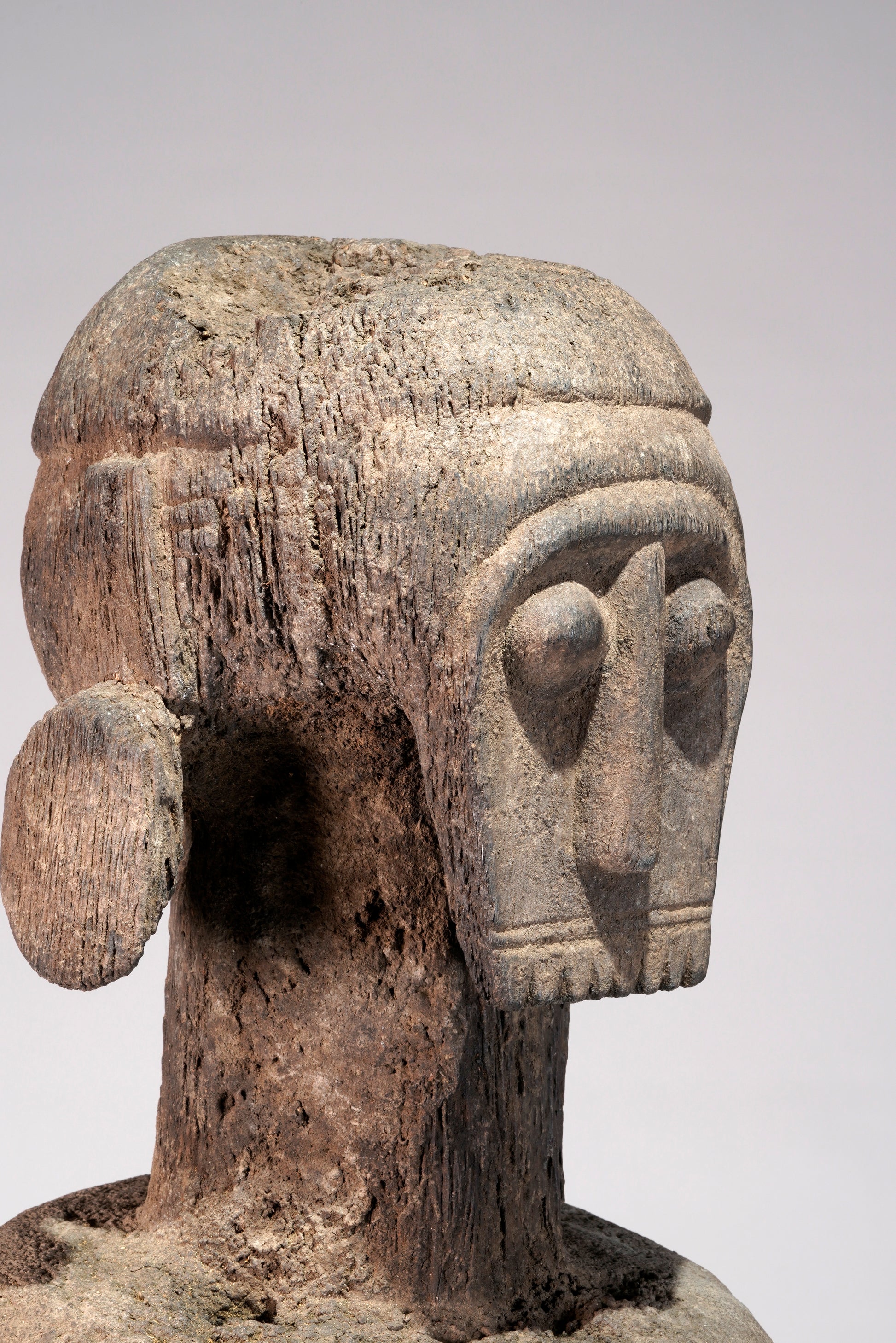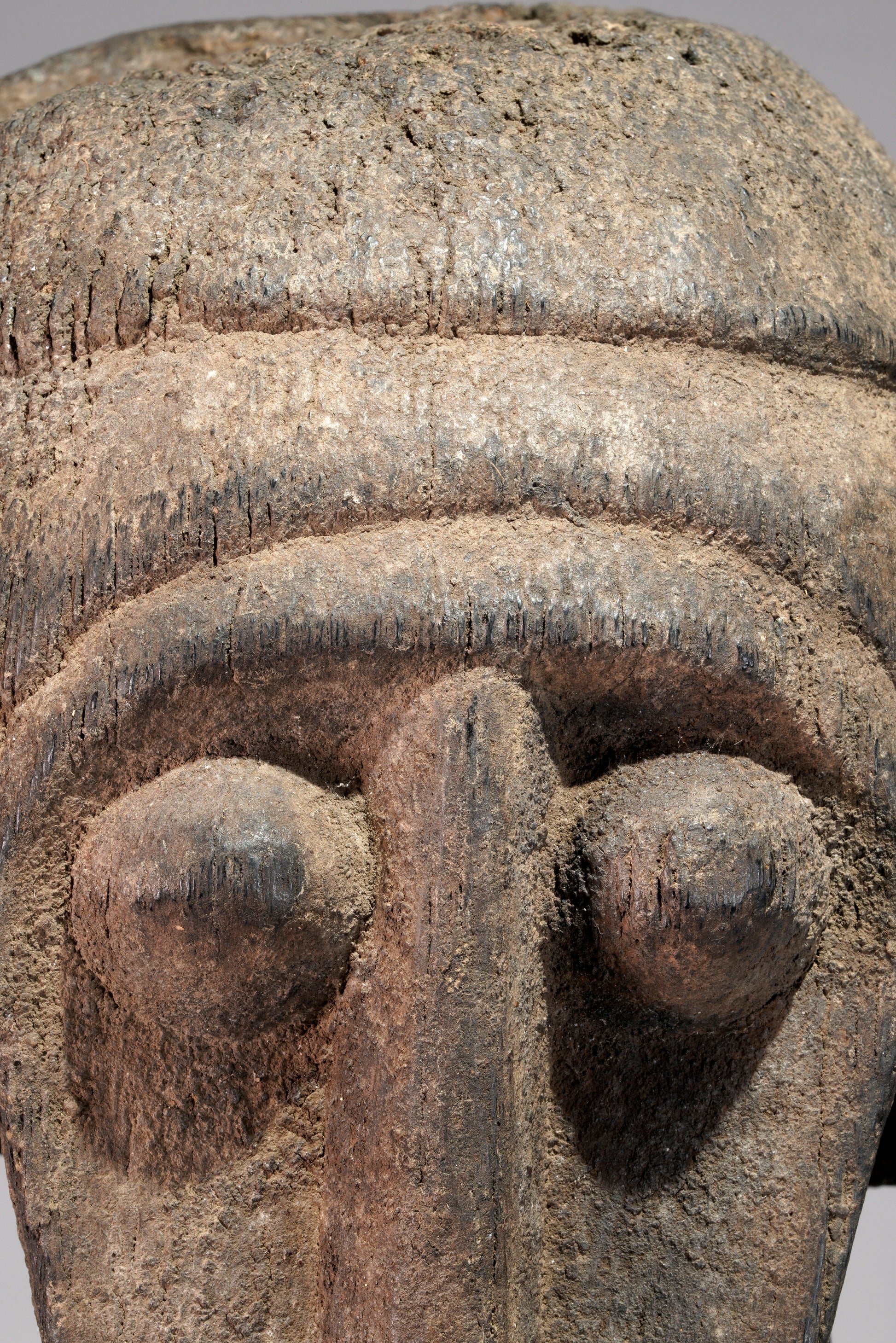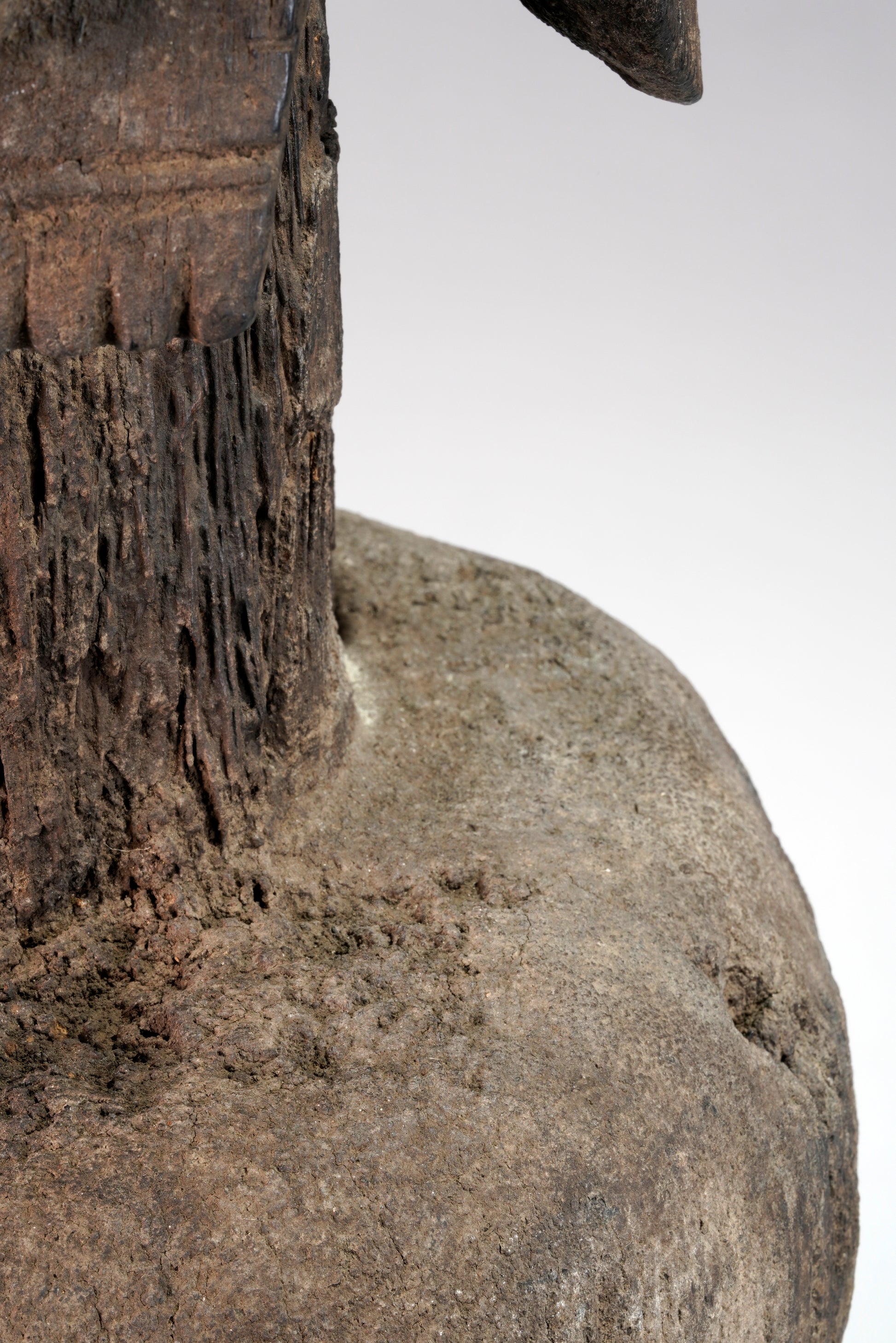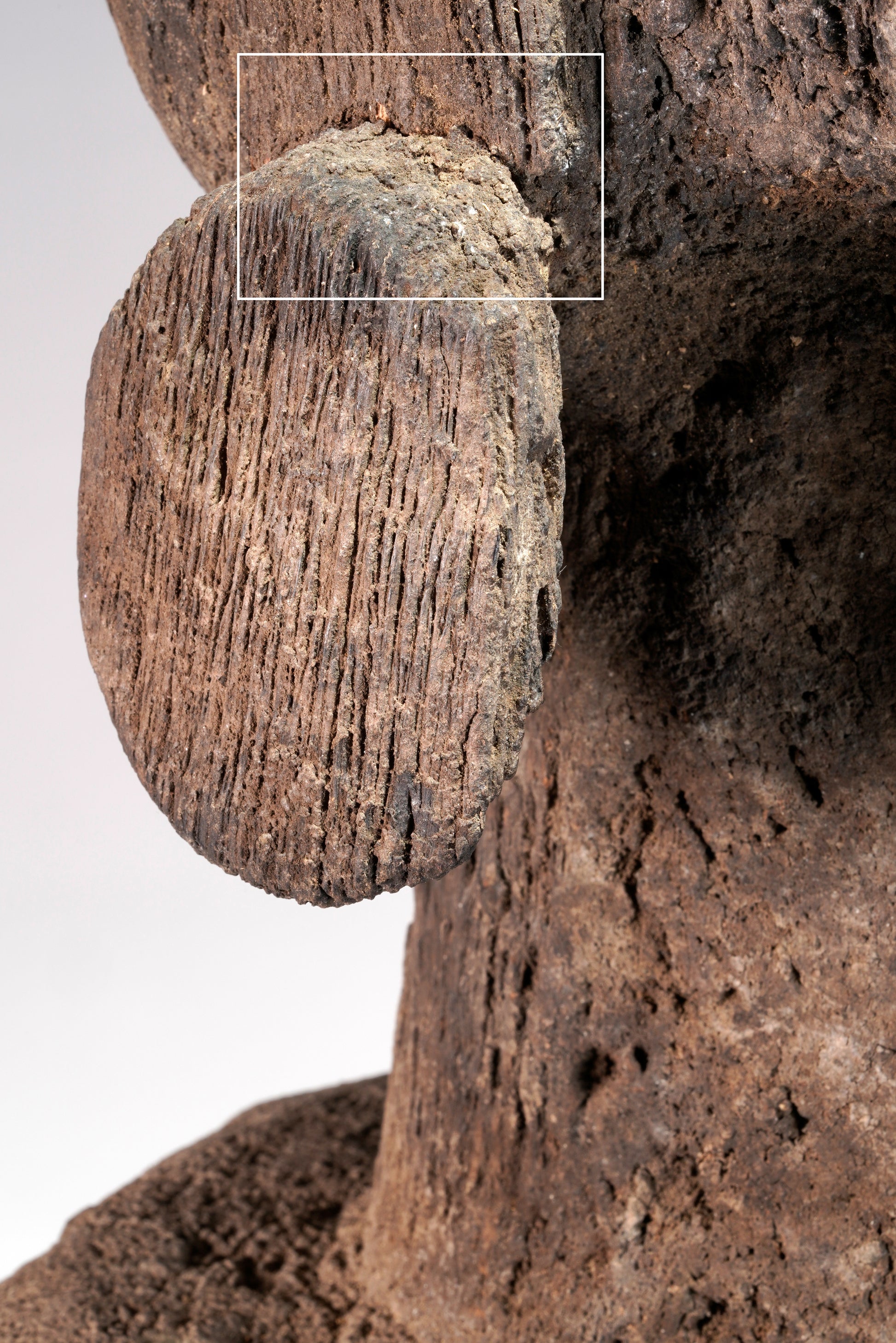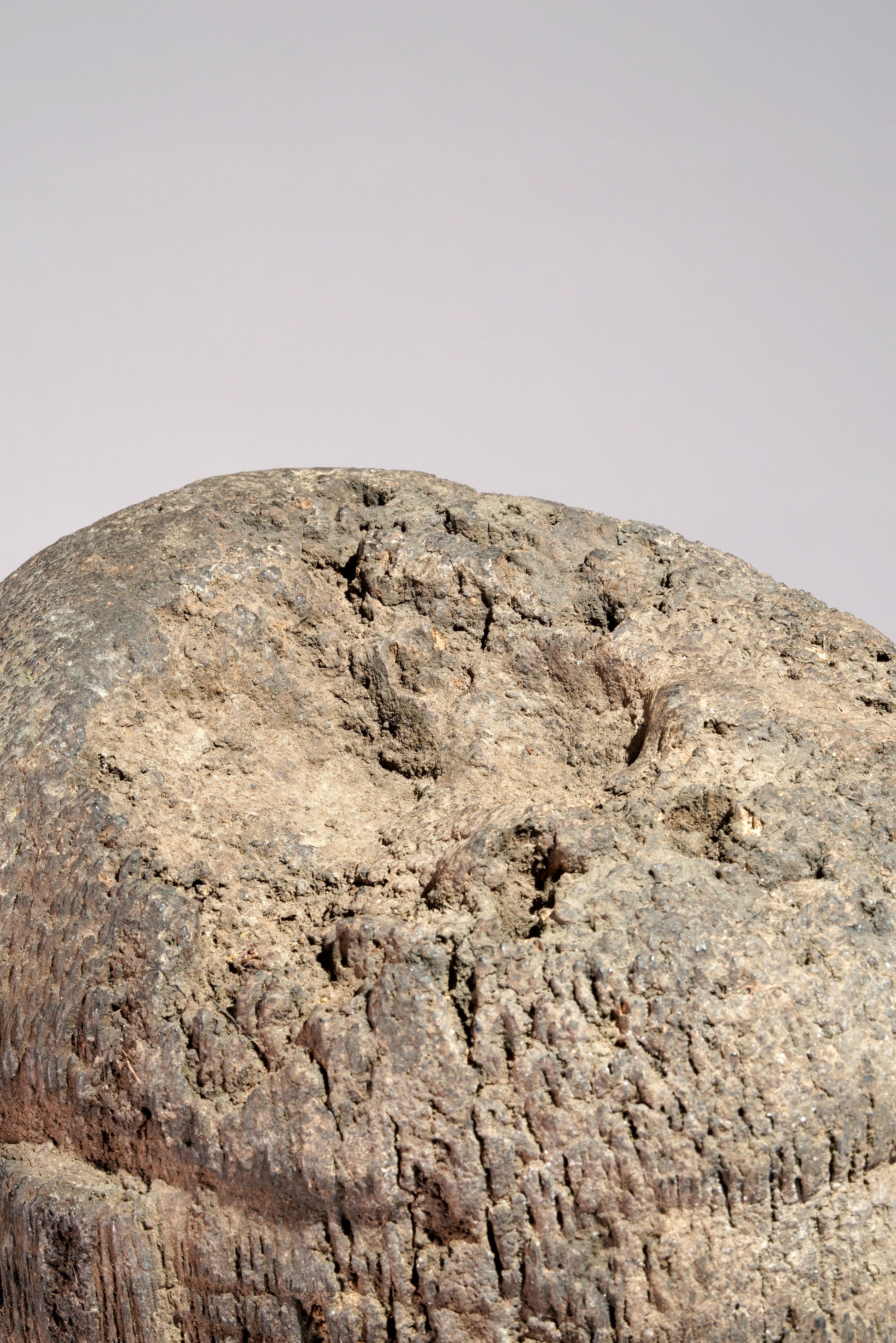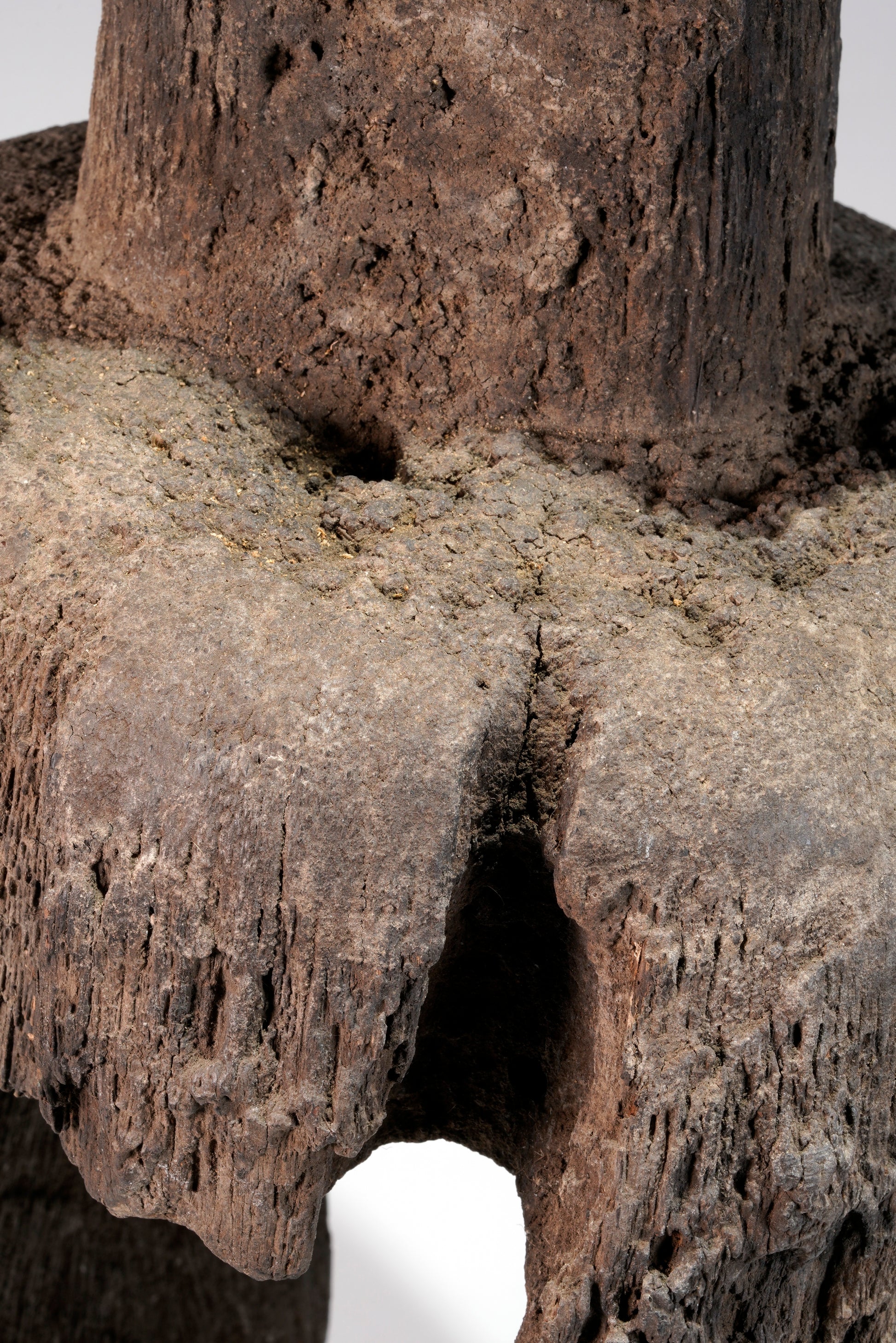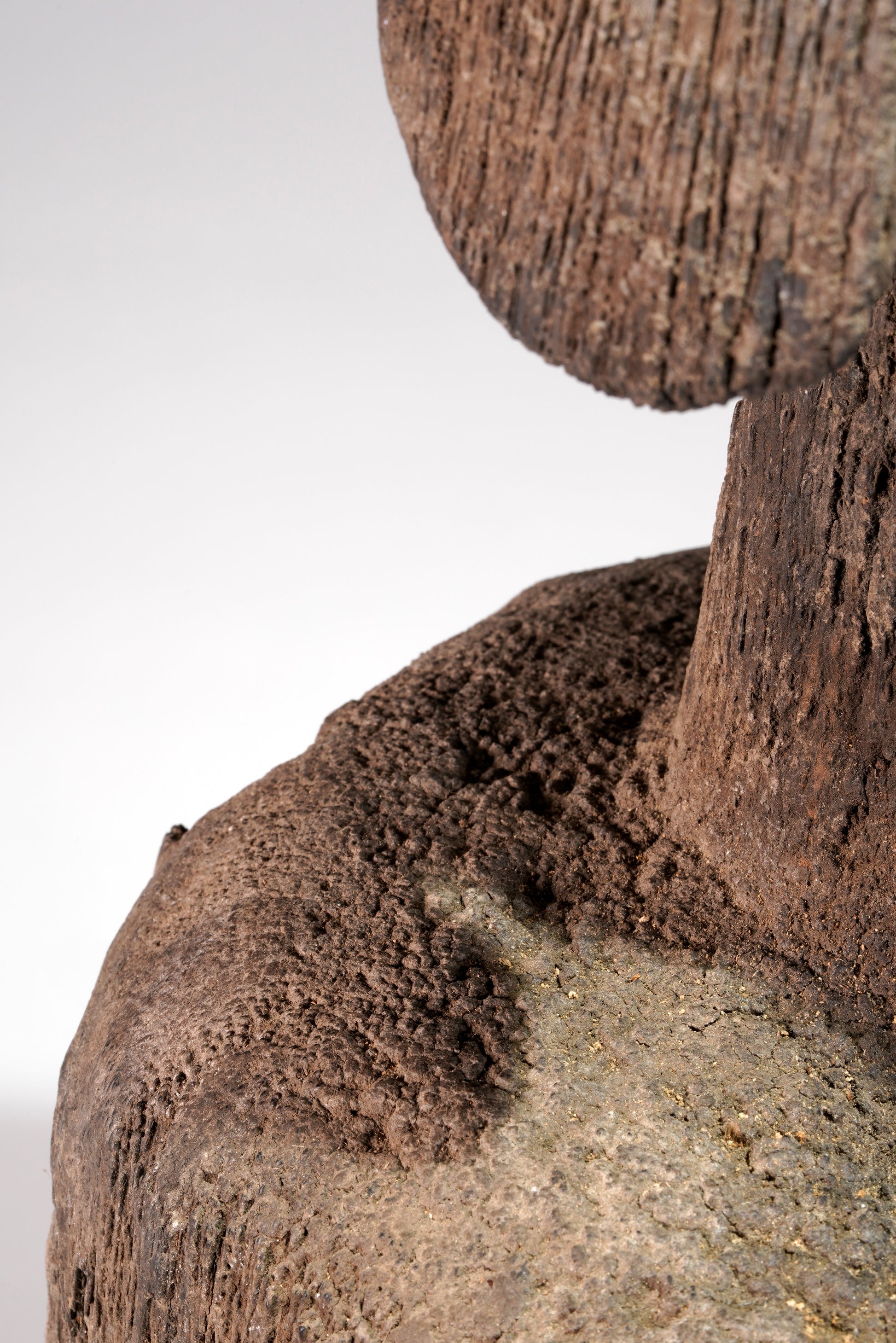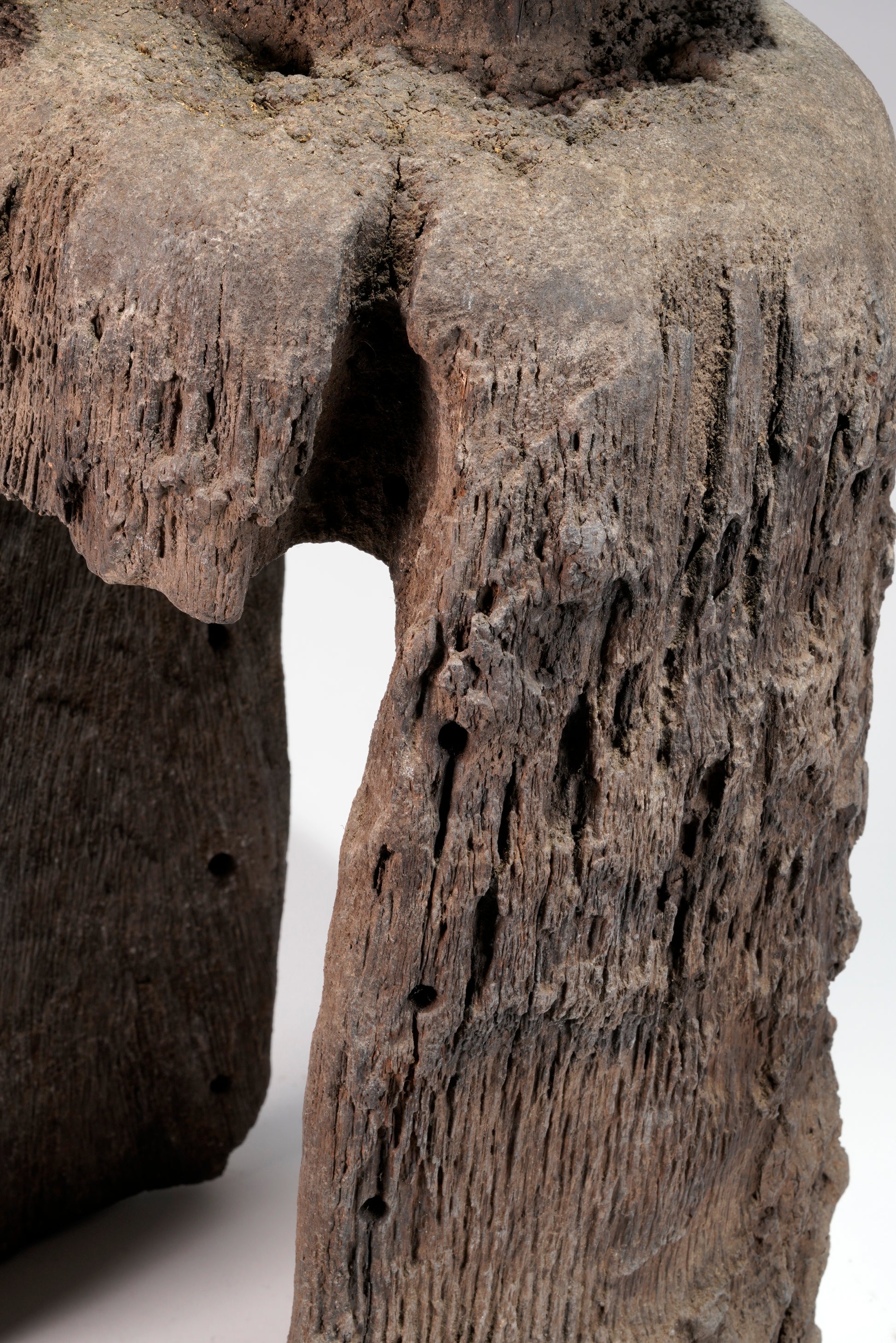wolfgang-jaenicke
A Jukun shoulder mask
A Jukun shoulder mask
Couldn't load pickup availability
A Jukun shoulder mask with fixation holes on both long sides. This raises the question of whether it is really a shoulder mask, also considering the heavyweight. This consideration naturally leads to questioning the function of a shoulder mask in the famous Jukun in the MET.
A certain resemblance to the famous piece is unmistakable, it probably comes from the same region, but certainly from a different carver, and the extremely weathered condition of the wood of our piece cannot be compared with the relatively good state of preservation of the famous sculpture in the MET.
Certain types of masks were made in large numbers, and in addition to the truly great, ingenious master carvers, there were also many carvers who had to make their works not only for daily use in ancestor worship but also for the many festivals that took place throughout the year.
Extremely heavy dense wood strongly weathered, one ear was broken off and was reattached by our restorator.
See the Jukun shoulder mask, which was published in Elsy Leuzinger´s Die Kunst von Schwarz Afrika (Zürich, 1970) and was "featured on Jacques Kerchache New Years´ Card of 1971" (Bruno Claessens, in his blog), published also in the JK book "Art of Africa" plate 514 and was late purchased by the MET NY and described as
"..enigmatic and arresting creation of a Jukun sculptor active in central Nigeria’s Benue River Region was a kinetic ancestral sculpture. According to accounts gathered by researchers, such works were animated in performances devoted to agricultural rites as well as to those relating to initiation of young boys into adulthood. Access to those events was highly circumscribed. Women, children, and outsiders were not allowed to view those nocturnal apparitions."
"The form is purported to have been manipulated by a person who used the lateral apertures to support and raise it. Perforations around the perimeter of the lower half allowed for the attachment of a vegetable fiber costume. The upper half distills an ancestral presence to essential features that are dramatically amplified. Crowning the summit is the majestic dome-like volume of the head. The eyes project in bold relief from the flat surface of the face and teeth are incised on the underside of the straight line of the mouth. At either side the flat discs of earflares favored by regional elites are emphasized. Adoption of Christianity and Islam during the first half of the twentieth century led to the abandonment of this minimally documented tradition." (Bruno Claessens, aaO)
A certain resemblance is obvious, probably from the same region but for sure by a different carver and the extremely weathered condition of the heavy, dense wood is not comparable to the relatively good preservation of the famous sculpture in the MET, Certain types of masks were produced in large numbers and in addition to the really great, ingenious master carvers, there were also many carvers who not only had to make their works for the daily use of ancestor worship but also for the many festivals that took place throughout the year were held.
